Final Design Outcome
The finalised graphics for each of the regions:
Deliverable 1
The first deliverable is an event poster
Deliverable 2
Store sign
Deliverable 3
Deliverable 4
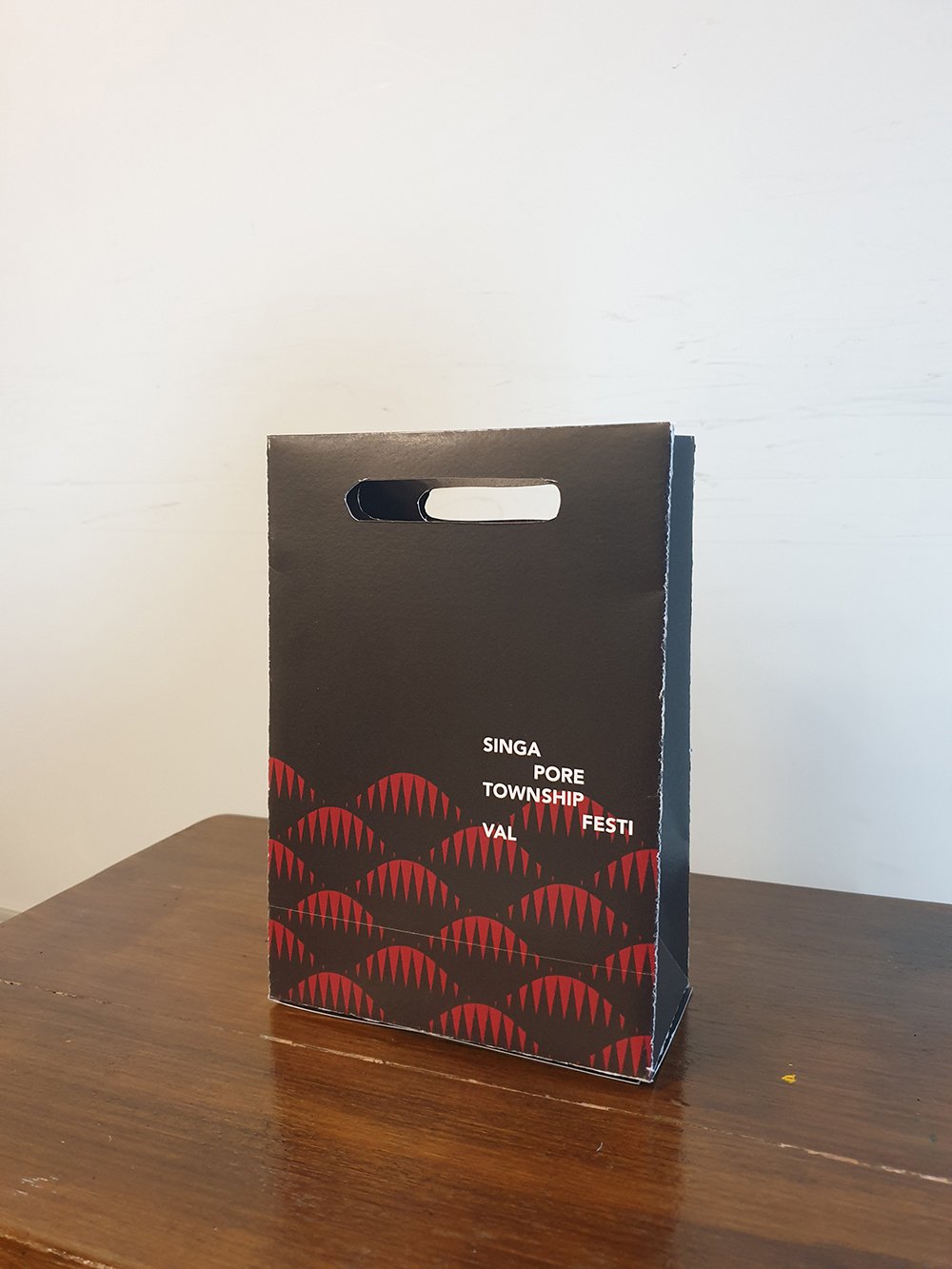
Paper bag design (exterior)
There are 16 posts tagged research (this is page 1 of 2).
For this assignment, we are to create a series of illustrations for a fictional event, which could be anything. The deliverable is are themed illustrations of at least 5 illustrated items, which at least one of it has to be 3D.
First approaching this project, even though the project could be literally about anything, I would think having a more realistic approach is more suitable for the long run in terms of portfolio. I think to design for a fictional but realistic local event looks better for a portfolio than an invitation for an outer space birthday party.
The even that I decided to go for is a festival or a market with participants from the different towns in Singapore. It shall be called Singapore Township Festival. As the name implies, the festival is all about food and handmade items, in a sense promoting local produce and crafts and at the same time, the Singaporeans love for food.
The idea is that every town would have its own design or graphics, but the styling from all the graphics from all the towns could come together and look like it’s from the same event.
The graphics would be a visual representation of the history of the town, where the name derives from, or any urban legends that are linked to the town.
I can’t possibly do the designs for ALL the different towns in Singapore. So I decided to pick the 5 different regions in Singapore :
South would generally be referred to the smaller islands south of Singapore.
The reason why I chose these towns is that they are more recognisable to the public and have been there longer than a lot of the newly developed ones.
Since the illustration is more of a secondary graphic only as a supporting visual element for the different towns, I figured the illustrations should be more of a repeated pattern, where a visual element of the town is repeated to create a pattern.




Most of the towns in the North is named after (or has links to) a guy named Nee Soon, such as Yishun and Sembawang. He made his fortune from his pineapple and rubber plantation, hence the reference will be from these 2 items.

Pineapple

Rubber plantation
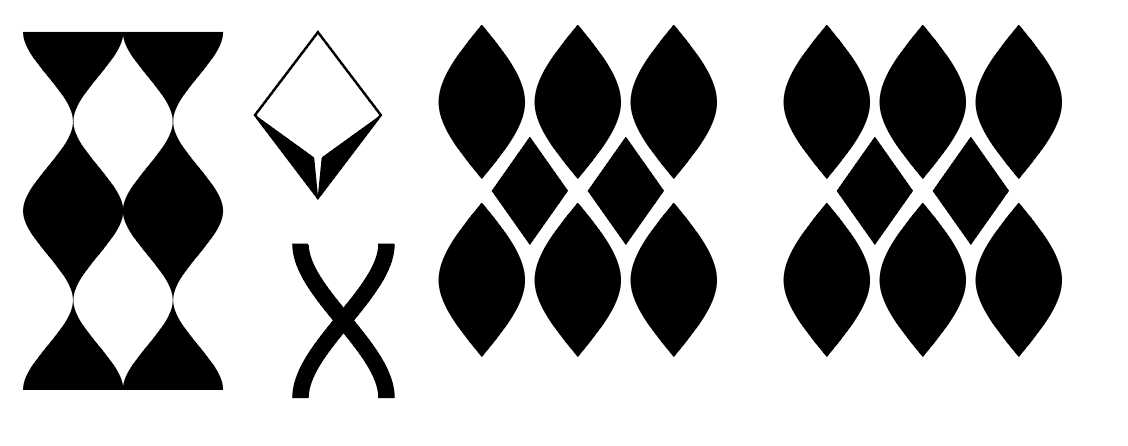 I combined the repetition of the pineapple with the lines and the collecting container of the rubber plantation.
I combined the repetition of the pineapple with the lines and the collecting container of the rubber plantation.
Northeast long ago were mainly fruit plantations. Even the term Punggol means to “throw sticks at fruits so it falls”. Now towns like Sengkang and Punggol has sea themes to them, hence another element to combine it with.
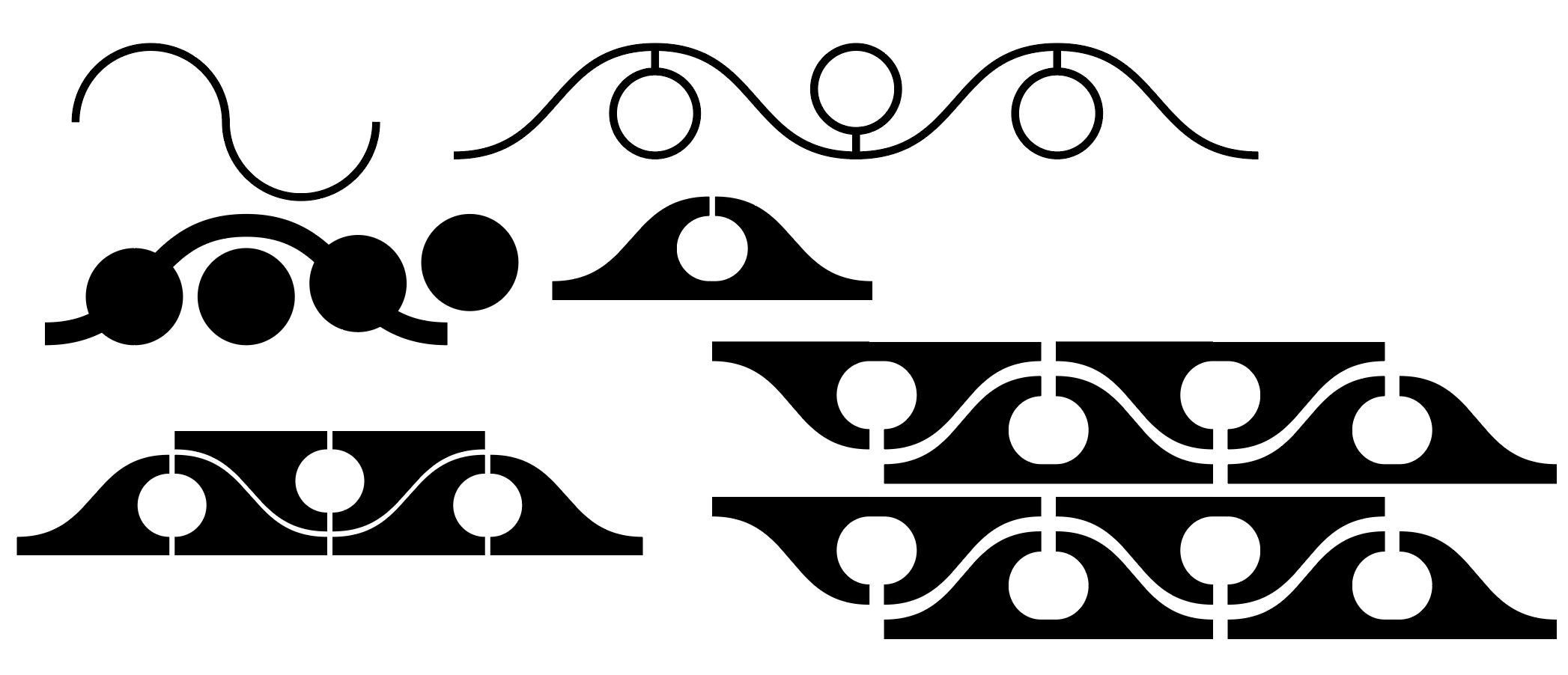 I combined waves and added a hanging fruit in it. When repeating the waves, it forms like a vine with fruits growing out from both sides.
I combined waves and added a hanging fruit in it. When repeating the waves, it forms like a vine with fruits growing out from both sides.
Inspired by the story of how Bukit Merah got its name.

A hill
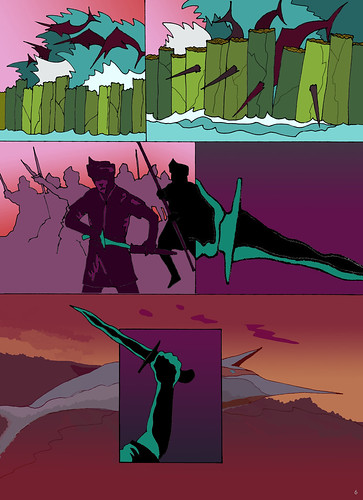
Story of Bukit Merah
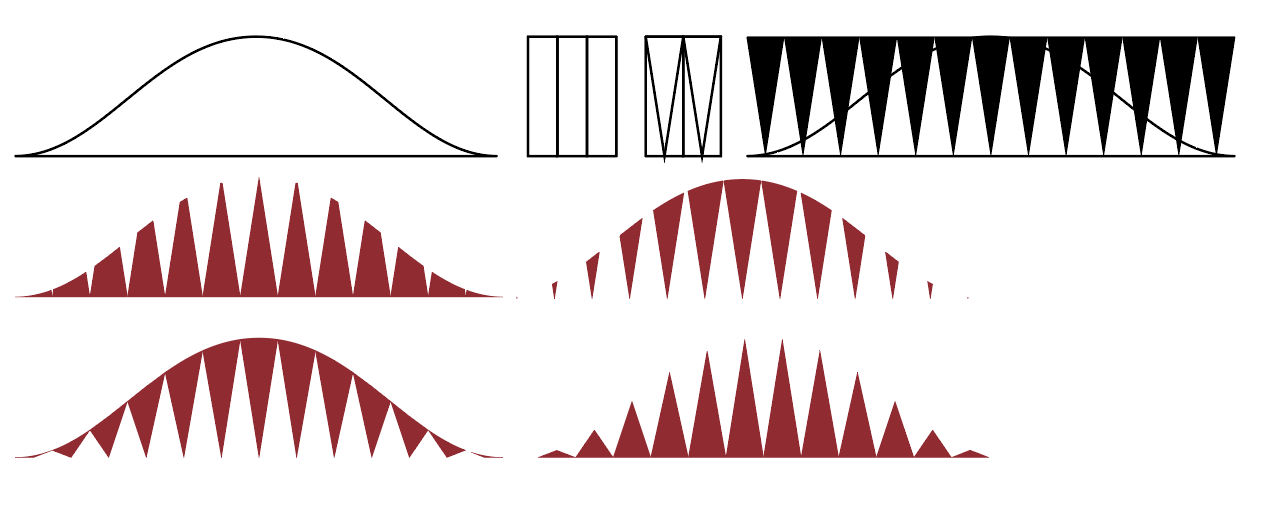 Combined the idea os the shape of the hill, the repetition of the banana stems used to build the wall, and the sharp nose of the swordfish into one form.
Combined the idea os the shape of the hill, the repetition of the banana stems used to build the wall, and the sharp nose of the swordfish into one form.
Inspired by the Tampines/tempinis plant.
.jpg)
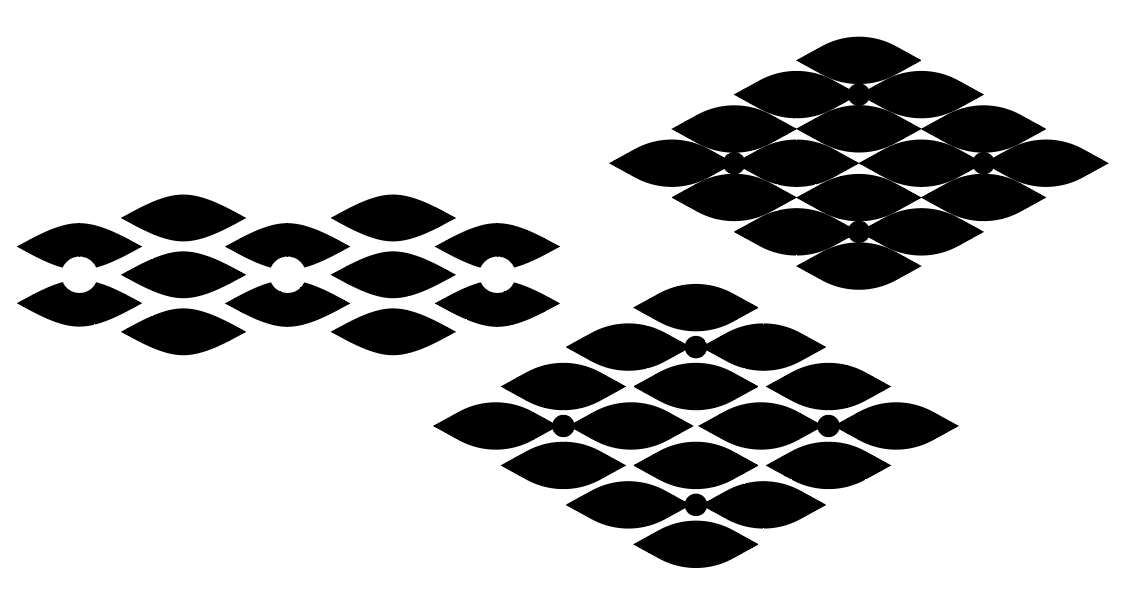 Included shapes of the leaves and the fruit of the plant.
Included shapes of the leaves and the fruit of the plant.
Most of the west is known for its industrial area, and back in the day, Jurong is actually part of the Silk Road.
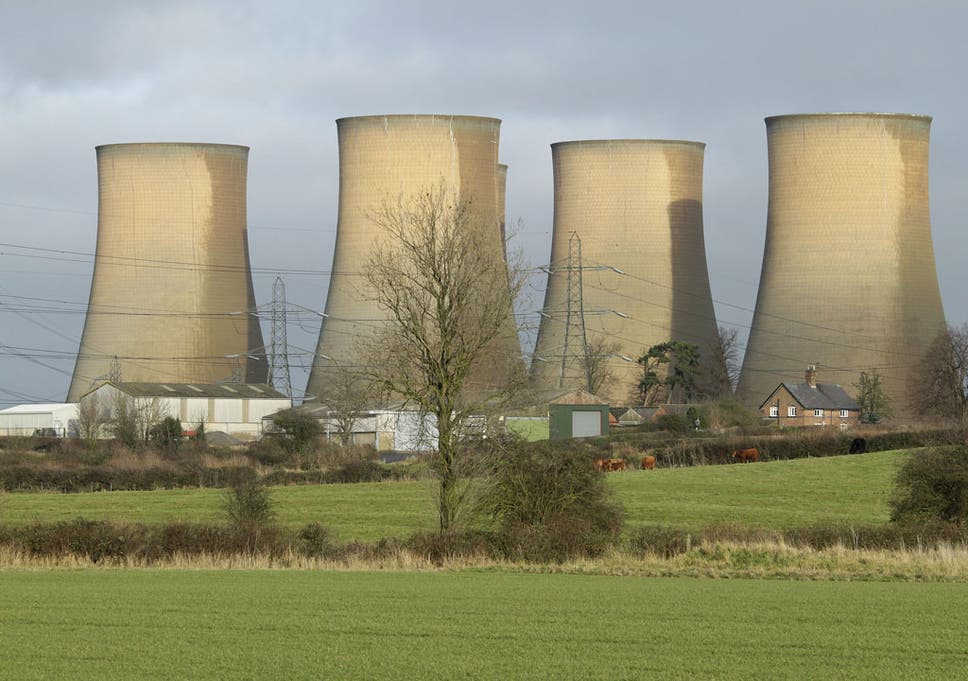
Cooling towers
 Included the form of a ship and some cooling towers into the form.
Included the form of a ship and some cooling towers into the form.

For the first idea, I was trying to go with the idea that just because a brand putting its presence into simple things like a plain t-shirt, it just becomes more expensive. So people are actually paying for the brand, rather than for function.
For the second idea was inspired by the Supreme Brick, but more to the idea of random items with brands putting their presence on it and selling the random items at a higher price.
The third idea is an assembly kit or a starter kit to be a Hypebeast.
I decided to go with the second and third idea as it is closer to the message that I want to convey through the illustration.
So initially I decided to combine the idea of random items with brands on them with the assembly kit, but the idea of having an assembly kit with random items would not make sense at all. So I decided to retain the items that make someone a Hypebeast. So the way that I would combine it is that both items, the random and the Hypebeast items, will still be there rather than having one replace the other.
For the illustration style, I decided to go to a more digital line-work and flat-lay as I felt like it would be a good way to represent the items that I would want to illustrate and also I think it is a good way to show the details within the items.
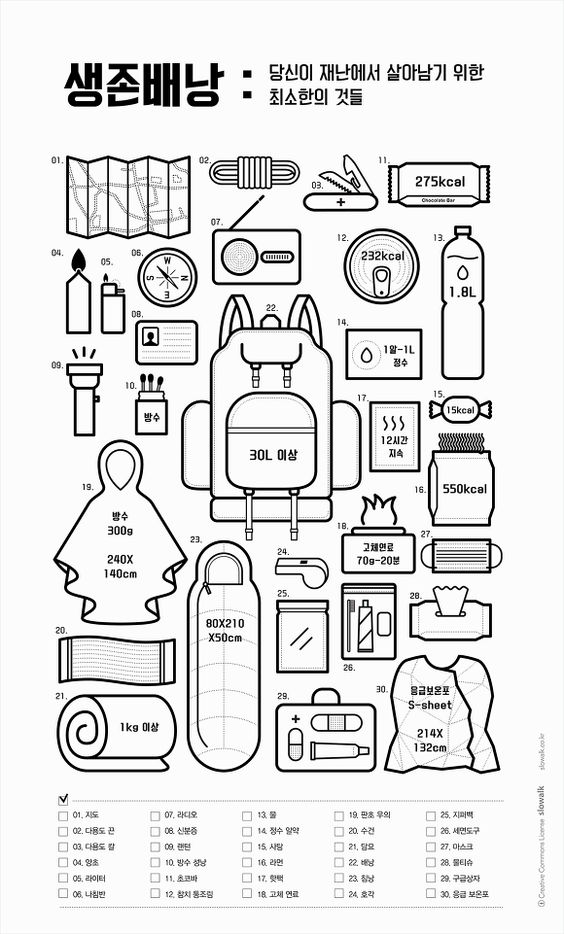
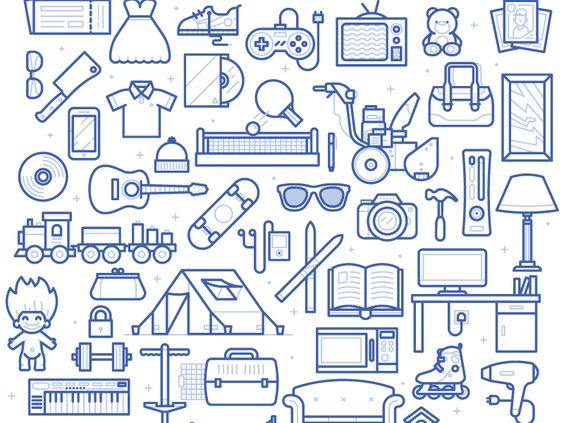

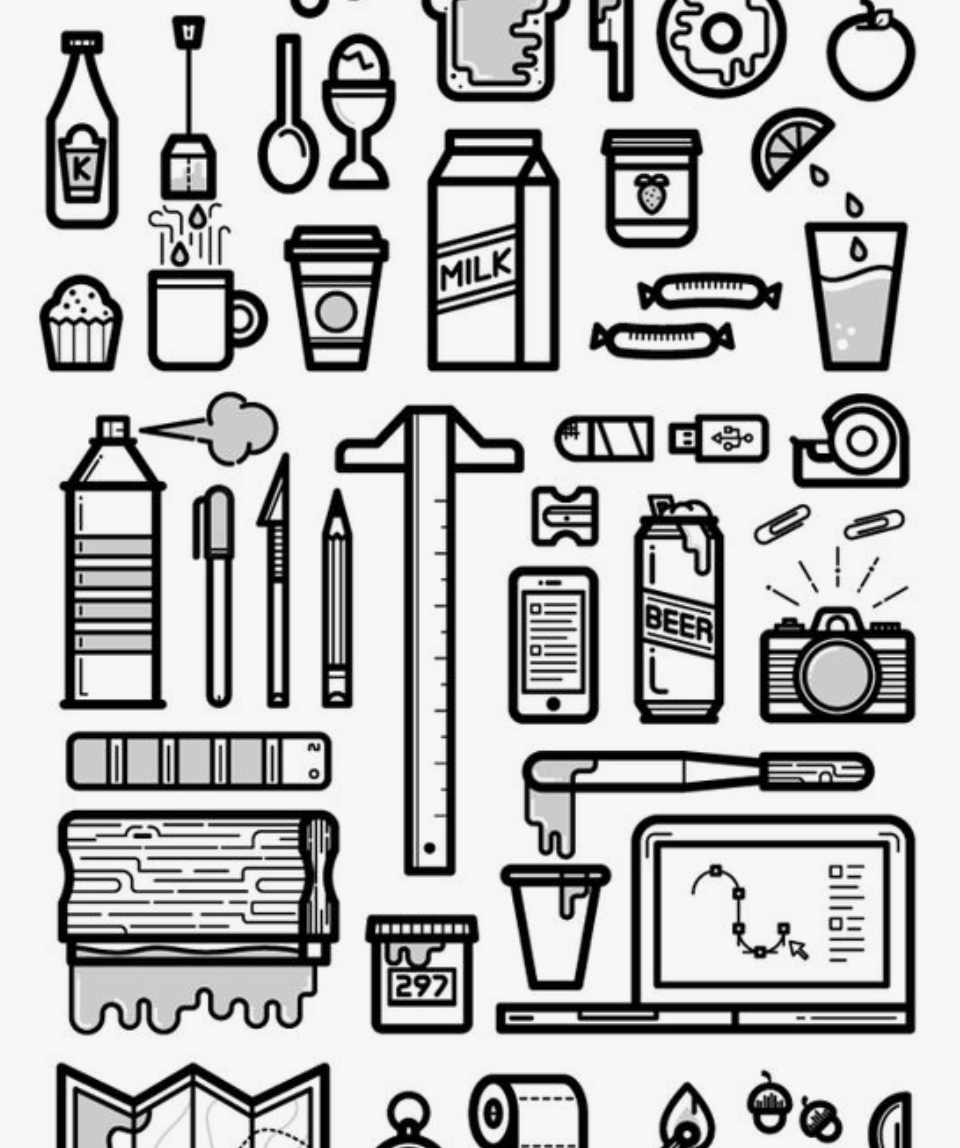
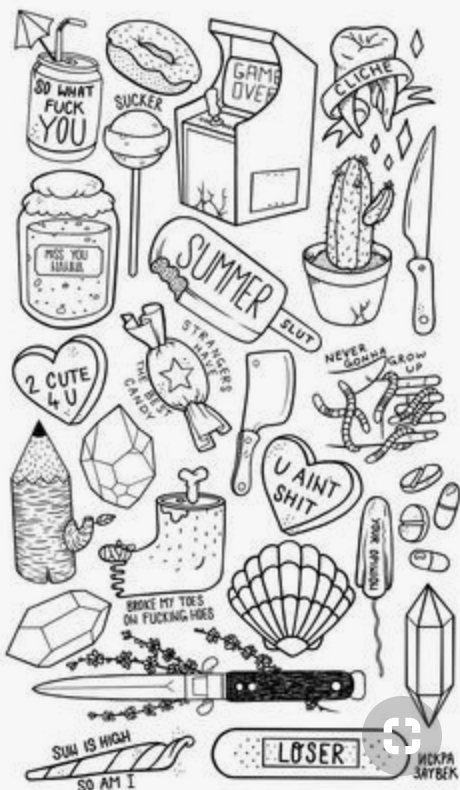
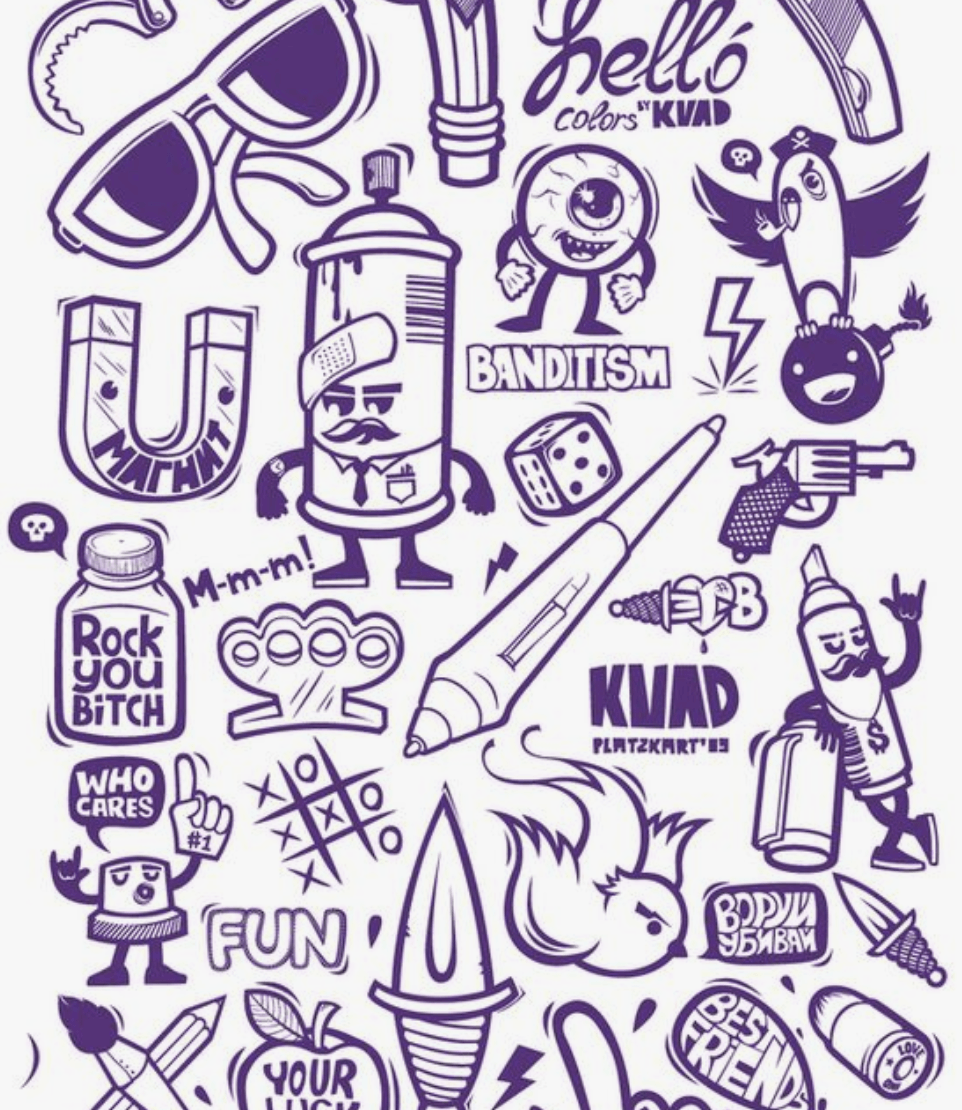 I was also thinking of whether to do it in a more static format or a more dynamic illustration
I was also thinking of whether to do it in a more static format or a more dynamic illustration
As for the initial design, I found it difficult to represent the brands, without having to put the brand logos itself. I tried to design the items based on what they are known for and their graphics that they normally include in their products, like the stripes in Off-White, and the bar in Supreme. But still, I felt like the items are still not well represented. In the end, I decided to proceed by adding the logos to it, which is seen below.
As for the colours, I would want to keep it neutral as I am putting a lot of brands inside, and I wouldn’t want any of them to stand out more than the other, and it would be quite chaotic to have a lot of colours in it. I also wanted to have almost like a template approach, like a flat drawing in fashion design where the colours don’t matter yet. Can also say that I having a neutral approach in this situation as these millennials are free to decide how they spend their money and does not directly affects me.
To add the logos, I have to tweak it a bit so as not to get into some copyright issues. Both items, the random and the Hypebeast, are present so that at first glance, it may just look like another flat lay of Hypebeast items, but when you look harder or look again, you can actually notice that there are random things in between.

The second assignment requires us to do an editorial illustration for the bi-annual publication, Varoom. We are also to do the illustration based on one of three themes:
The illustration will be used as the cover of the Varoom magazine. So to begin this work, I would start my research on Varoom’s work.
According to the AOI – Association of Illustrators:
Varoom is the globally leading illustration magazine featuring a unique combination of industry insight and critical analysis of the field of illustration. It is a unique publication commanding a global audience commenting on and discussing the contemporary illustrated image in depth. It features interviews with illustrators, image-makers and designers as well as critical articles by leading commentators.
It is interesting to see the various illustrations featured on the cover of the magazine. Opens up my mind to the many different illustration styles and concepts there can be. Below is a sample of one of their latest publications:
More on the assignment…
According to Udemy:
Editorial illustration is artwork created in response to written text, usually an article in a magazine, newspaper, or blog. In this course, we will focus on how to analyze a text, develop a unique idea, and communicate that concept visually as a partner to the article. Editorial illustration is an exciting field because it allows the illustrator to inject their own opinions and unique voice into the work. We’ll focus on how to inject your own personality into your expressive illustration while still communicating your concept and illuminating the written word.
Some samples of editorial illustrations:

Illustration by Stephanie Wunderlich

Illustration by Agathe BB

Illustration by Joe Magee

Illustration by Sebastien Thibault
Images from Agoodson.com, and more of the details about editorial illustrations can be found there too.
When given these 3 options, the first theme that struck me was Obsession. Mainly because I don’t have enough experience in the feeling of empathy and I definitely have not much understanding of style. Those 2 themes are fairly broad and I believe that it would require much understanding of empathy and style before being more specific on what kind for the assignment. I went on with obsession as I felt that it is more relatable and is easier to understand.
So specifically to obsession, I would want to do obsession over Hypebeast clothing and items. There is a recent trend among the younger millennials where they tend to want to buy all the latest and hyped clothing and flaunt it when they go out or on social media. I just find it annoying and interesting how this thing developed in recent times and effects only a certain generation.
The term Hypebeast was initially from a website which main intention from the creator is to be the place to go for updates on the latest sneaker trends in the market. Somehow the brand expanded into promoting other types of clothes and the latest street culture that brands offer, hence the term Hypebeast refers to the culture or someone who is up to date with the latest clothing of culture trends normally promoted or sold by the up-market brands.
More on what Hypebeast is about here, on their own website.

More on the topic of obsession over Hypebeast stuff, there was a time when one of these brands, Supreme, came up with a brick that they launched as a humorous way to joke about how their customers and the market would buy anything that has the word ‘supreme’ written in a red box-shape just to remain in trend. They also made a lot of other items with the Supreme-red and the logo printed on it, and it almost became like an icon of mocking putting brands on random items but people would still buy them.
More on the Supreme brick here, by Highsnobiety.
So I got the idea for the assignment, I would want my illustration to be based on that idea of having brands putting their logo on random items and people would still buy them because they are so obsessed on trying to remain in-trend by buying all the Hypebeast stuff.
The audience of this illustration will firstly be these millennials. This is because they are mostly the ones who are having this obsession. Maybe it would help them realise that what they are doing is really silly.
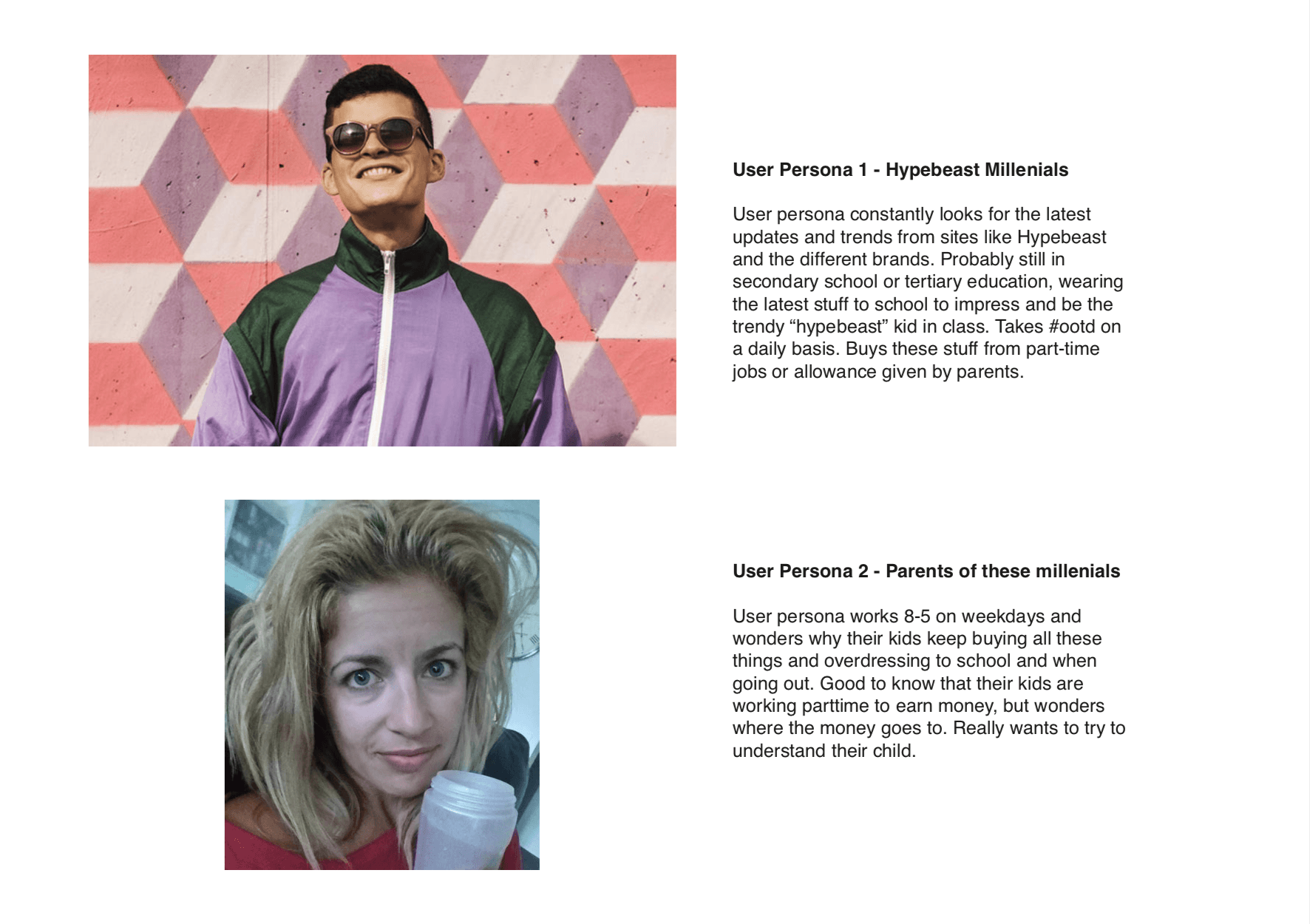 Moodboard
Moodboard I was planning to go for a neutral look, almost not representative of the items and the brands so that none of it stands out more than the other, that’s why I went for the monotonous black and white also so that colour meanings will not play much of a role in the illustration. I also plan to use a flat lay and more static than dynamic so that it is clear and to the point.
I was planning to go for a neutral look, almost not representative of the items and the brands so that none of it stands out more than the other, that’s why I went for the monotonous black and white also so that colour meanings will not play much of a role in the illustration. I also plan to use a flat lay and more static than dynamic so that it is clear and to the point.
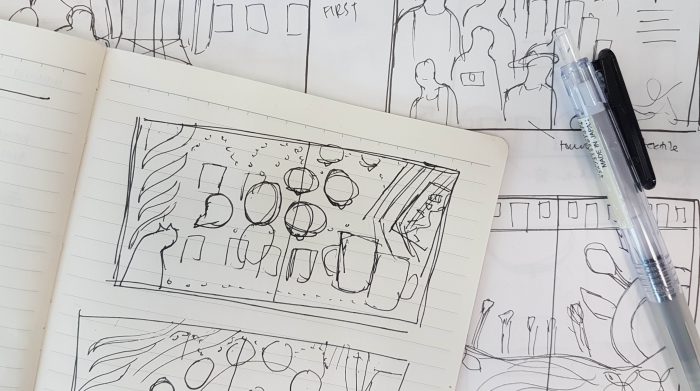
To show the transition of the day to night in my zine, I would pick out elements that stand out during the day and the night so to narrow down on what to show in the zine before even actually deconstructing it into graphic forms.
Things that stand out during the day:
Things that stand out at night:
Things that stand out throughout the day:
Since we are not encouraged to do photography style, I figured that I could use illustrations for the graphic forms of the zine. As for the type of illustration style, I would think of flat vector-based illustration as it would help bring out the play with colours and would also allow me to do overlays and layerings without it being too messy.
Artist Reference
Malika Favre
One particular artist works that captured my attention as an inspiration for the zine is the works by Malika Favre. I loved how she used flat vector illustration and minimal use of colours and details but could create a variety of graphic shapes and forms.
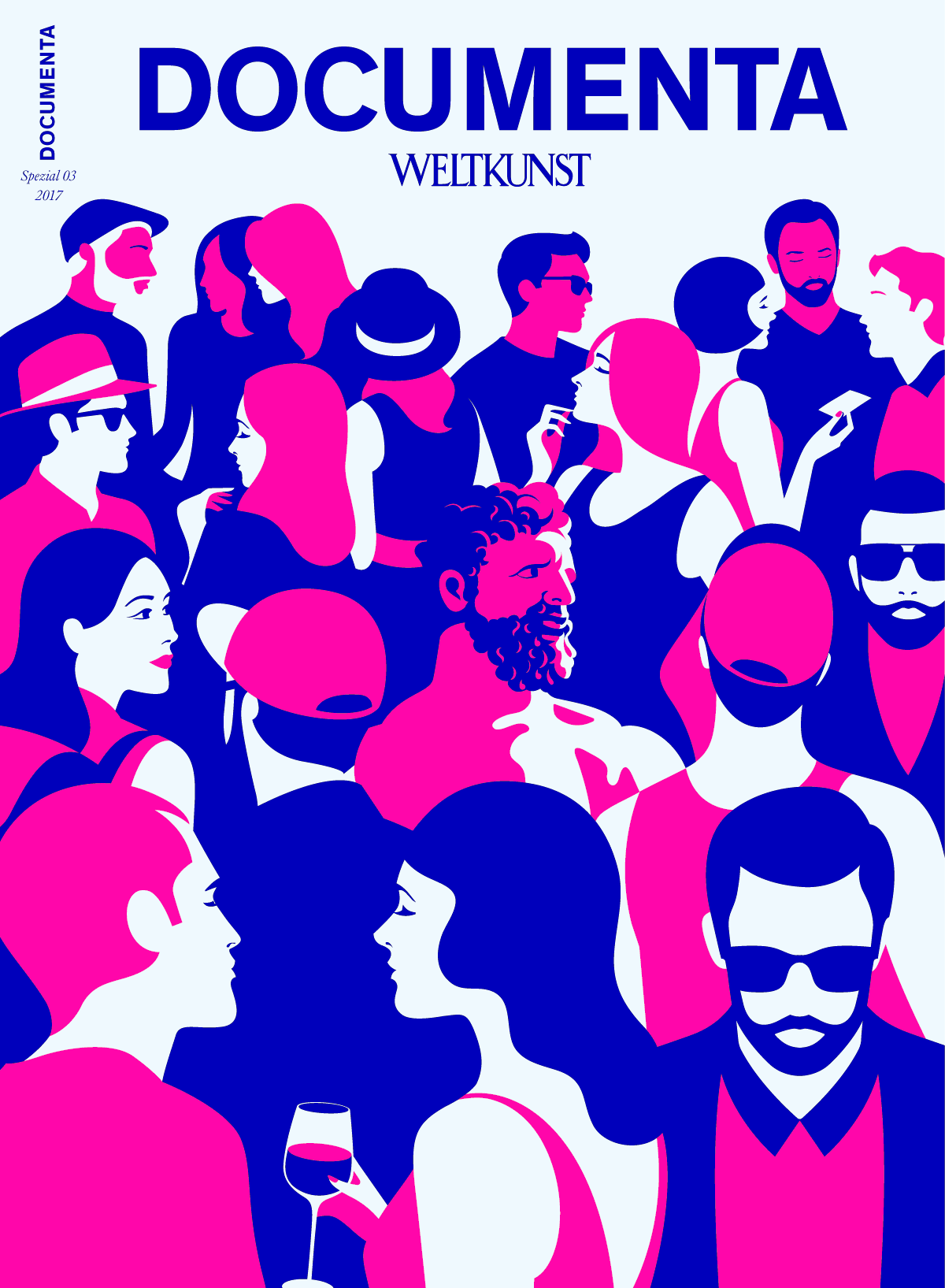
La Documenta by Malika Favre (http://malikafavre.com/la-documenta)
I loved how even by using 2 colours (not including the white) the artist could form a crowd and many different people with minimal or very minor details.
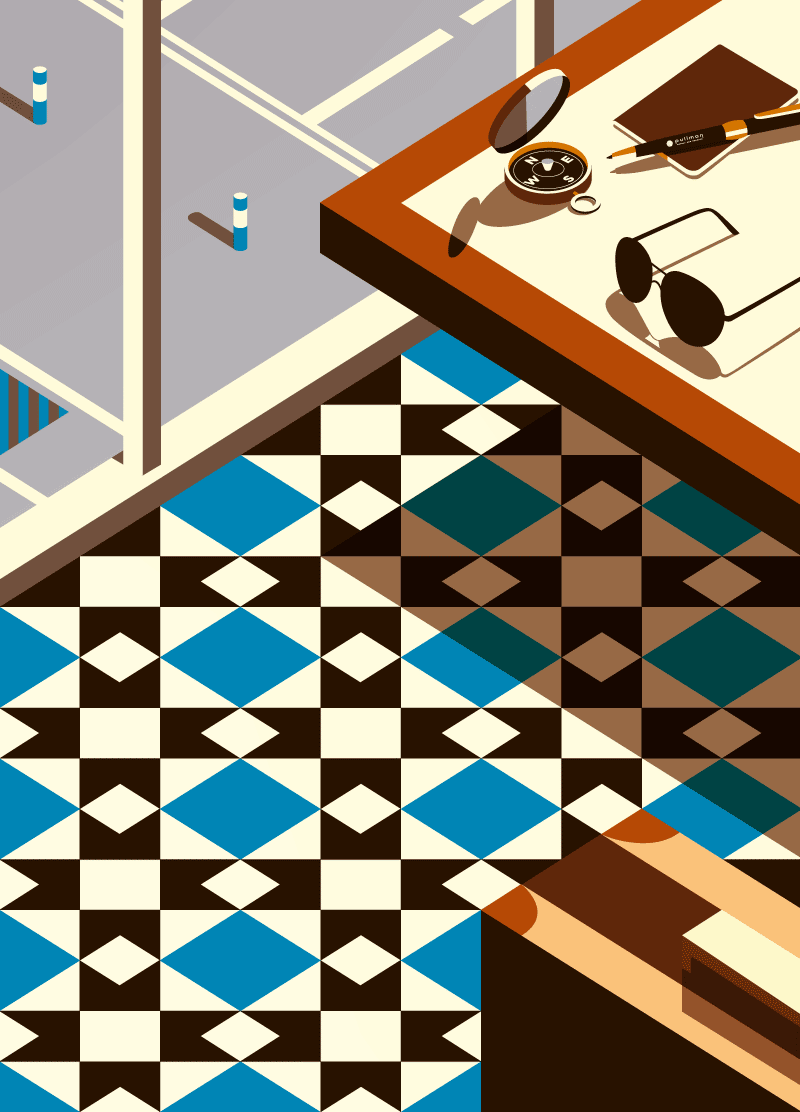
The Traveller by Malika Favre (http://malikafavre.com/the-traveller)
Part of the 3 illustrations under The Traveller series, I liked how the artist has used a similar pattern for the floor tiles as the patterns I spotted on some of the exotic lamps during my night visit to Kampong Glam. I could attempt to do something similar for my zine maybe.
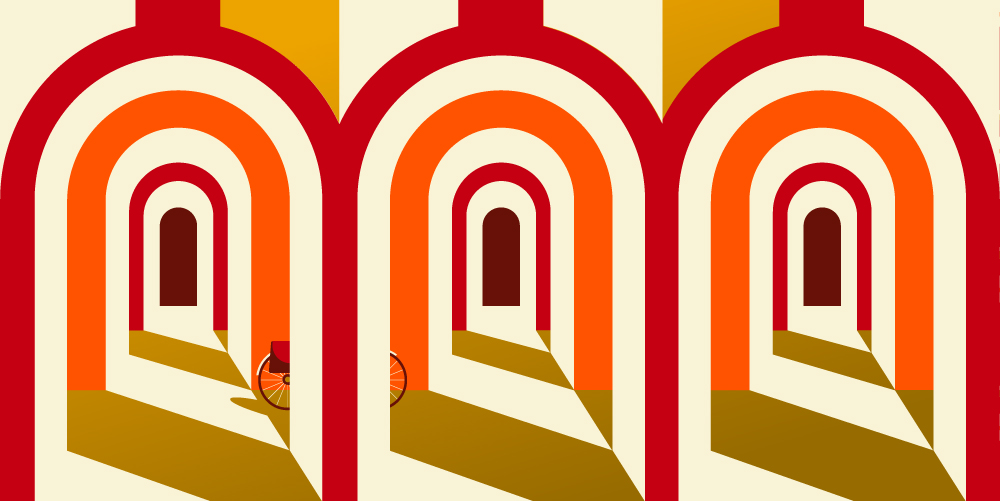
Part of the Christmas in Bologna series (http://malikafavre.com/christmas-in-bologna)
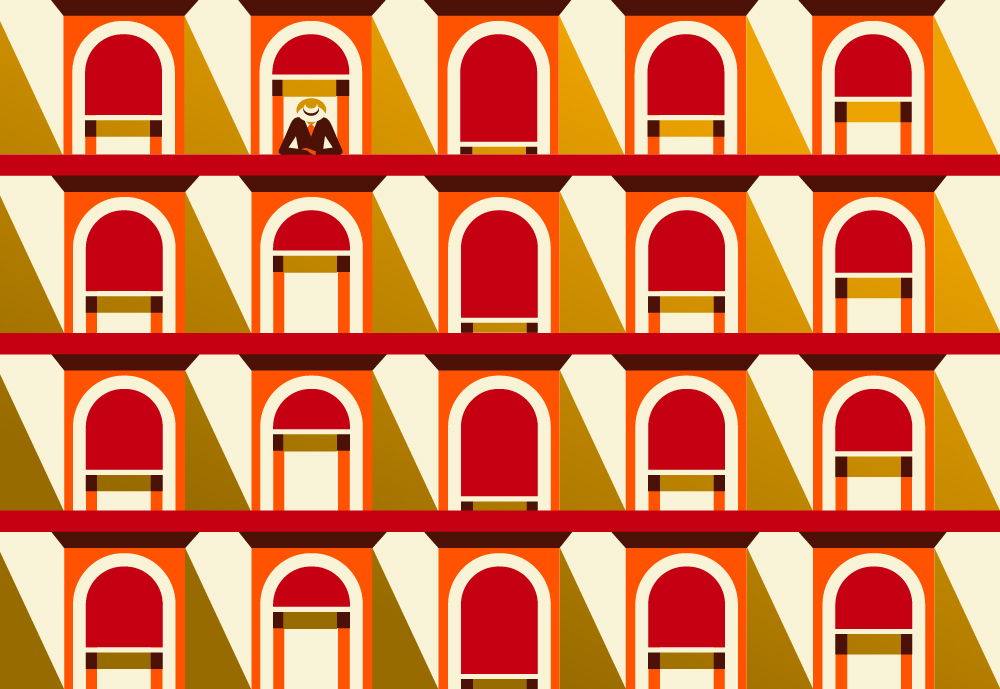
Part of the Christmas in Bologna series (http://malikafavre.com/christmas-in-bologna)
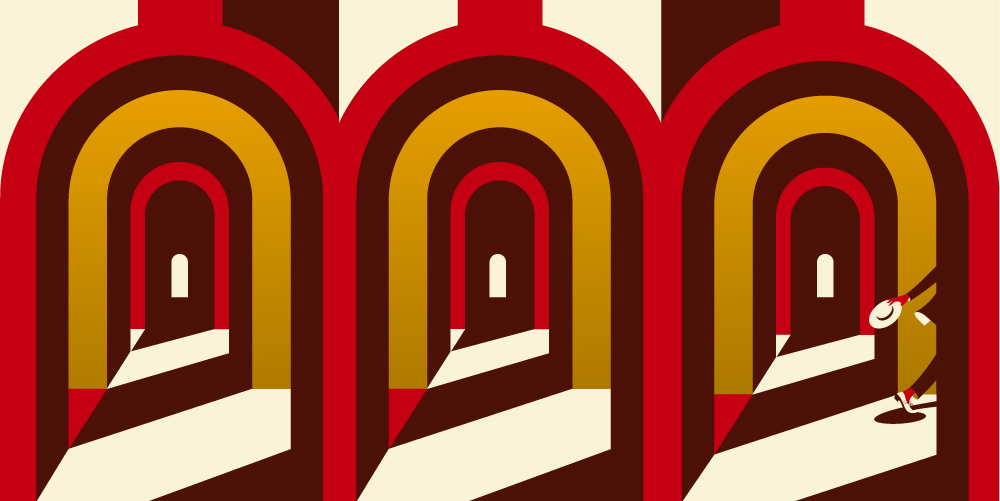
Part of the Christmas in Bologna series (http://malikafavre.com/christmas-in-bologna)
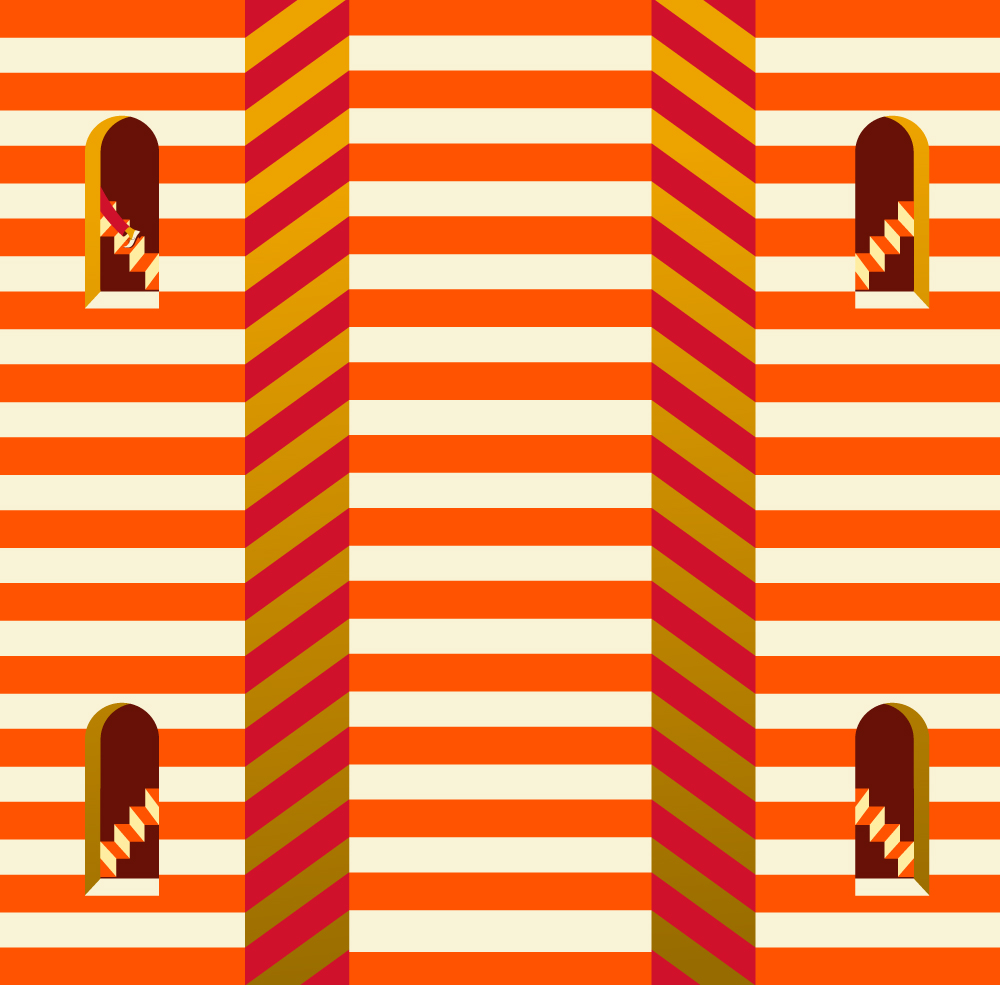
Part of the Christmas in Bologna series (http://malikafavre.com/christmas-in-bologna)
For this series, Christmas in Bologna, I could easily relate how the artist illustrated the windows, patterns and walkways with the many shophouses, walkways, and windows at Kampong Glam. I could possibly try a similar style for my zine for this.
Adam Koon
Another artist work that I was inspired by is the works by Adam Koon. I particularly liked how he used irregular shapes to make the works look more fun and not rigid. His use of colours even though is also minimal still manage to make some of the elements in the works stand out more, hence, visual hierarchy. He has also added some textures and minimal line works in the works, making it stand out more and have a more overall impact.
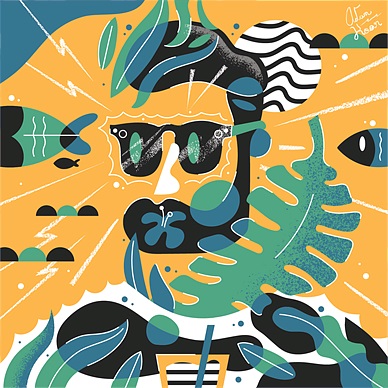
Illustration by Adam Koon (https://www.illustrationweb.com/sg/artists/AdamKoon/view)
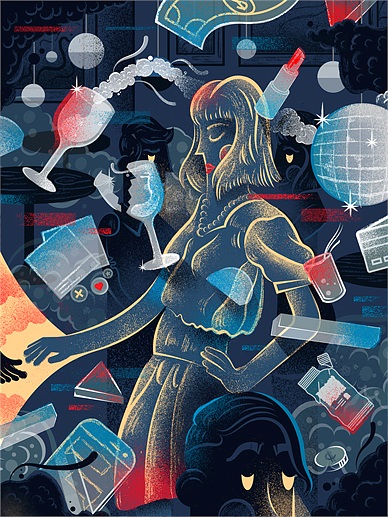
Illustration by Adam Koon (https://www.illustrationweb.com/sg/artists/AdamKoon/view)
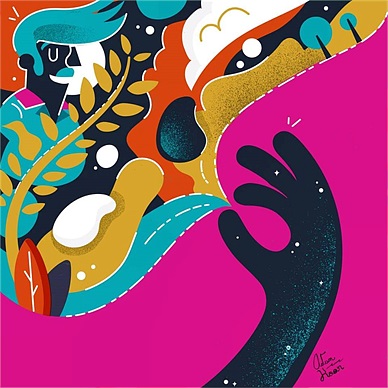
Illustration by Adam Koon (https://www.illustrationweb.com/sg/artists/AdamKoon/view)
Adding on to the artist reference, I have also created a mood board for the zine. As mentioned earlier, I plan to use flat vector illustration + use of vibrant colours throughout, which are the colours that can be seen in the graffiti and the shophouses at Kampong Glam. For the night scene, I plan to use a similar style but with a darker background. The illustrations will also begin to overlap and overlay each other, the effect which I found on the walls which is the overlaying coloured shadows. The colours would be more saturated and bright to contrast with the dark background.

Before I would actually deconstruct the content into graphic forms, I would lay out the content first.
Since it will be a day and night zine, the front and back cover would be bright and dark respectively. So the readers would know that the book is about day and night, respectively. As for what is on the cover, I would plan to put what would be easily recognisable as something very Kampong Glam – the shophouse windows.
The first two pages would be to show what goes on in the day. So as mentioned earlier:
It would showcase what is prominent during the daytime.
The middle spread would be most important as it showcases how the place changes from day to night, which is the transition of Kampong Glam. The content would feature some of the elements from both day and night, in a way blending both together, hopefully seamlessly.
In contrast to the first spread, the last spread would be showcasing what is prominent in the night. The pictures will be overlapped in a way to show the double imagery mentioned earlier.
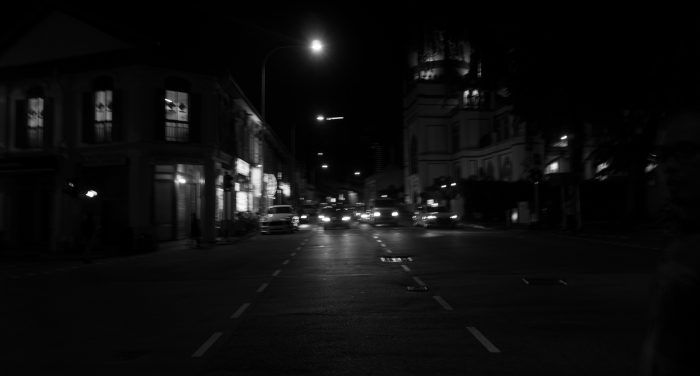
So my earlier ideas got rejected because it was too “touristic” as if its a promotion or publication for Singapore Tourism Board. So I decided to think it through again.
For this idea is a play on the fact that previously Kampong Glam used to be a place where people do trade, selling different items to make a living. Another thing that stands out during my visits there is the number of streets there is, how they criss-cross each other and forms like a grid system for the area. So I could play with these 2 elements to create the zine.
However, I would think that the idea is not deep enough as a concept.
So there is a palace. Many shops that sell different made things. Many shops that sell items needed to make stuff. A mosque. And food outlets, restaurants. An idea struck me in a way that it looks like the elements that can be found in a game. Castles, shops that sell items, a place of prayer, and food shops. So I could create a form of promotional content for a new in-game area that just opened. The design concept would be pixel art, like those Pokemon-top-view games.
However, I would feel like I’m just literally making the place into a game, and not really exploring much of the graphic forms and visuals.
So after rejecting my own ideas, I decided to go back to Kampong Glam. but this time I decided to go at night, to see what is there, and what are the differences, and to my surprise, it was actually quite different.
(Sorry for the bad images! I have really unsteady hands)
At night, there seem to be more people there to eat, drink and chill, and more food shops open at this time too.
The things that would stand out the most would be the neon lights and the signboards that would only be switched on at night. In the day it would appear as just a plain signboard. Some signboards would even change colours!
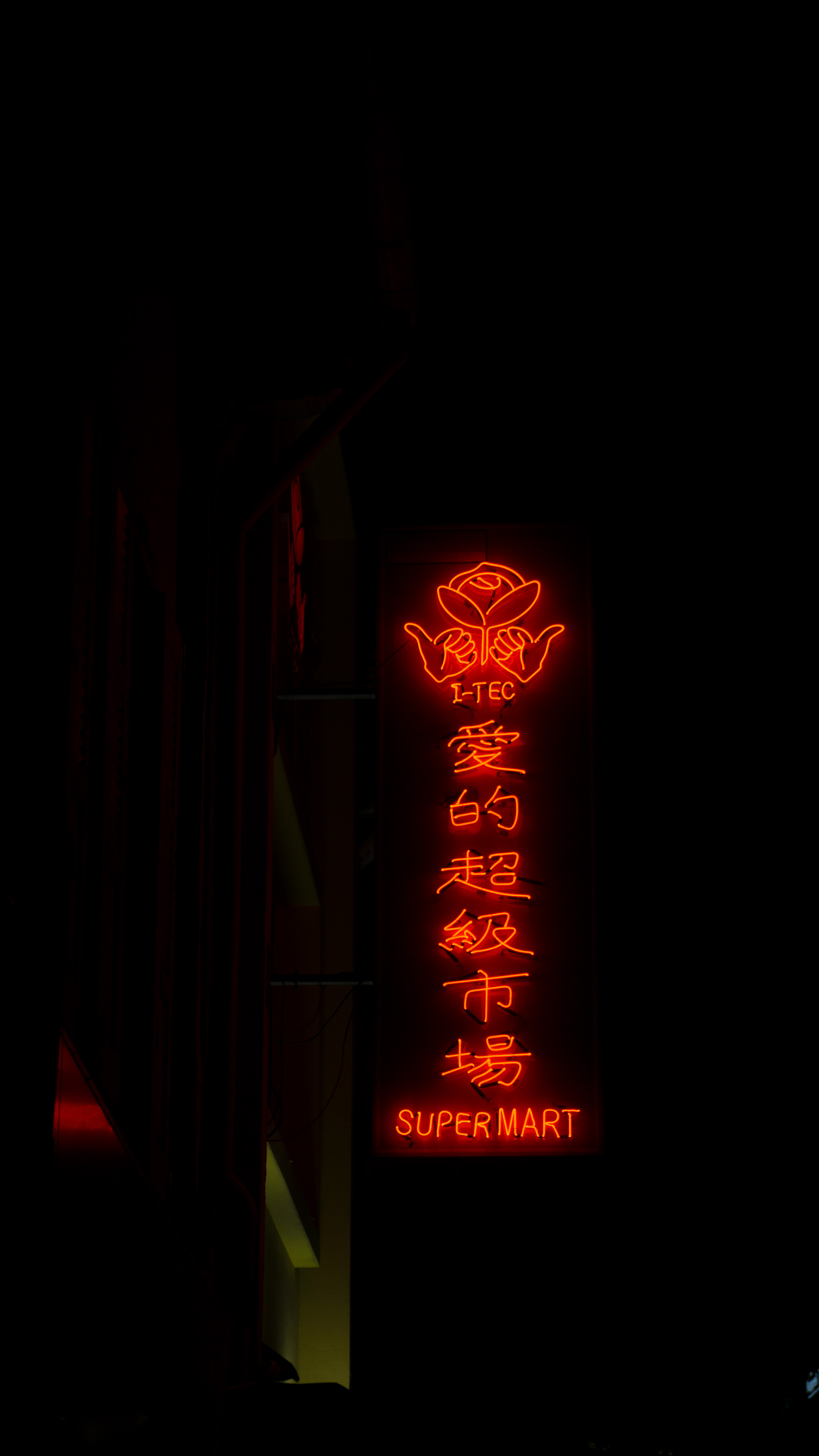
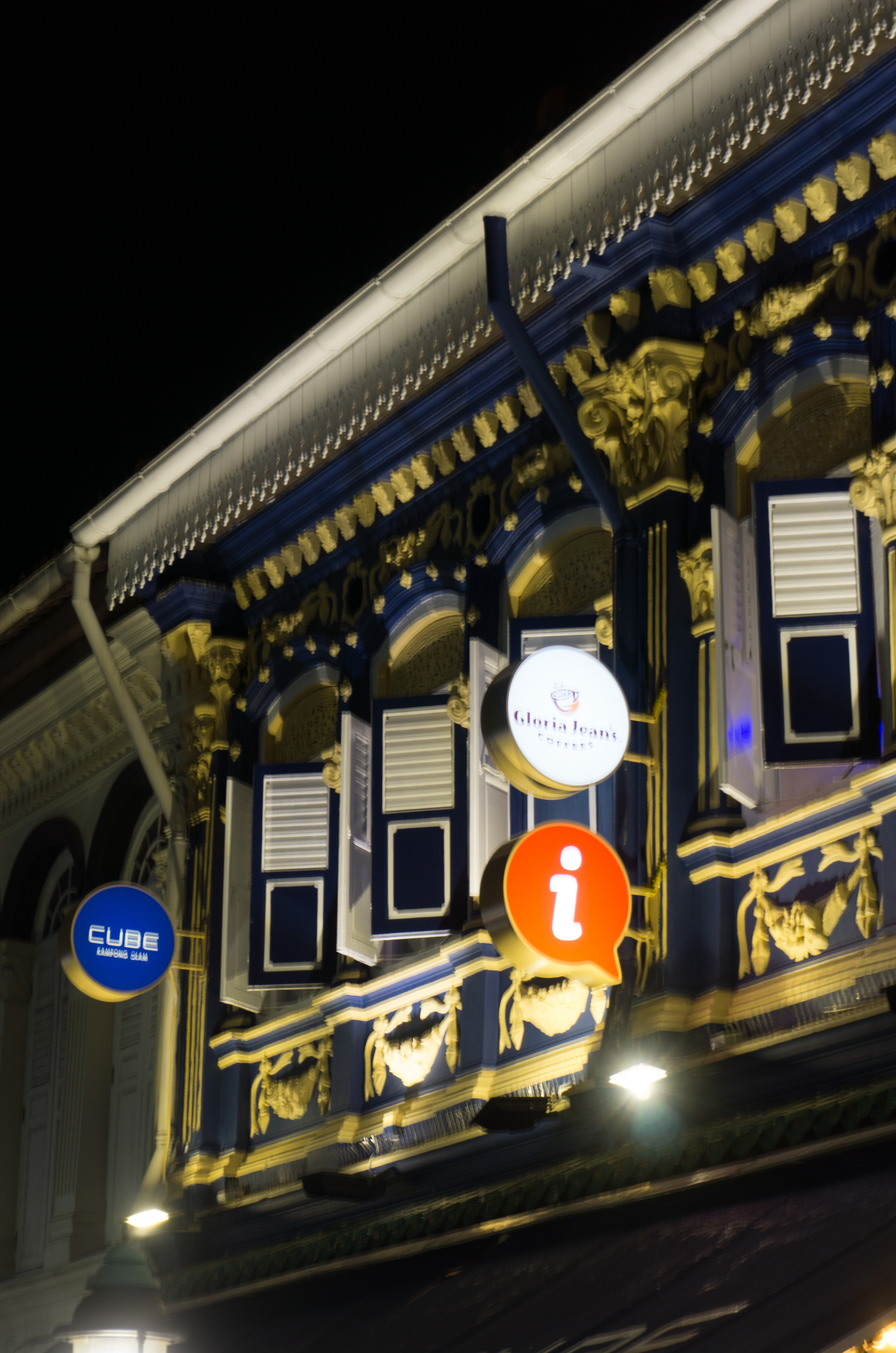

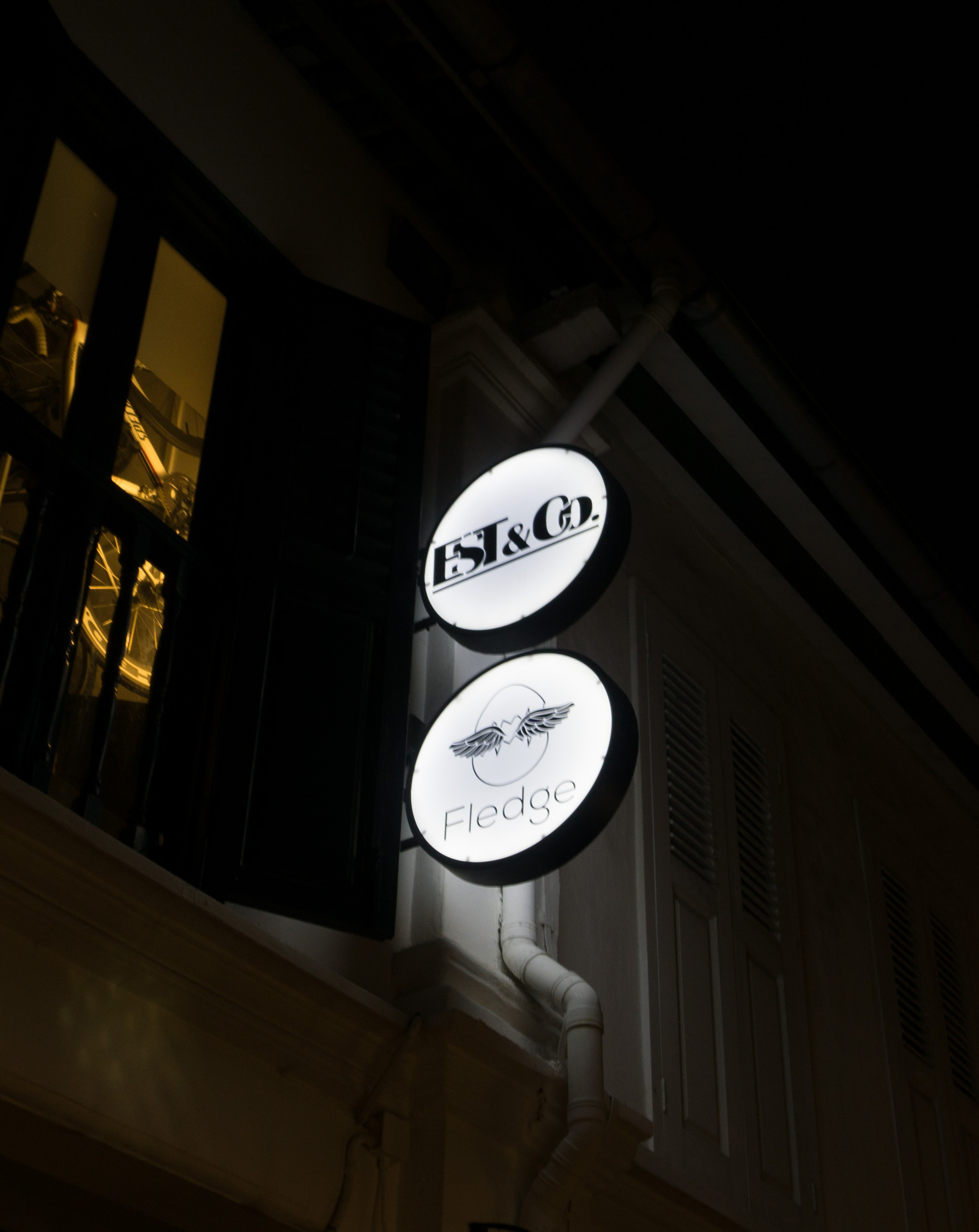
 Lamps of all sorts
Lamps of all sortsAt night, the lamps that you normally see along the streets will be switched on, hence creating and displaying all these different patterns and colours that you won’t normally get to see in the day.
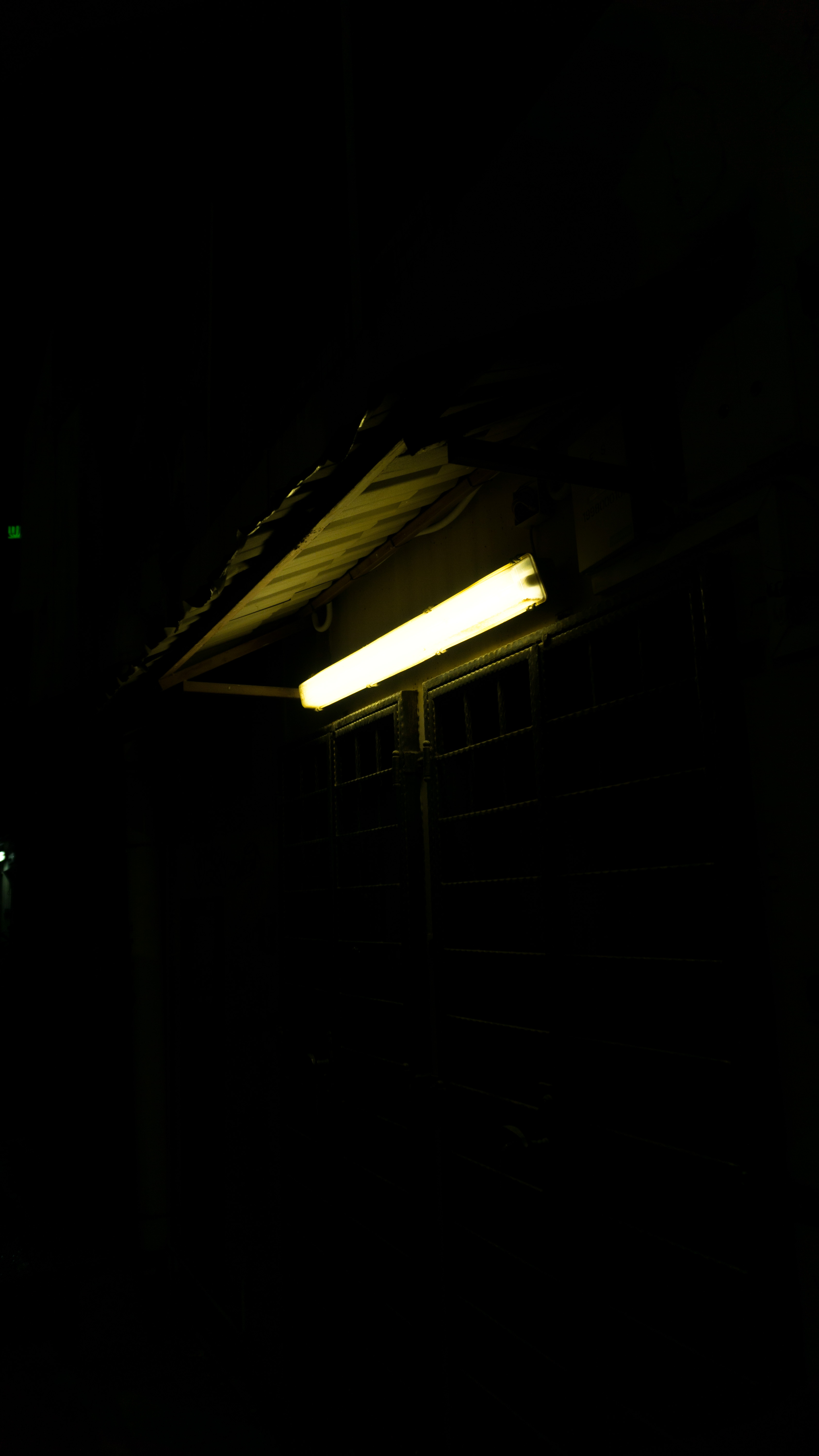
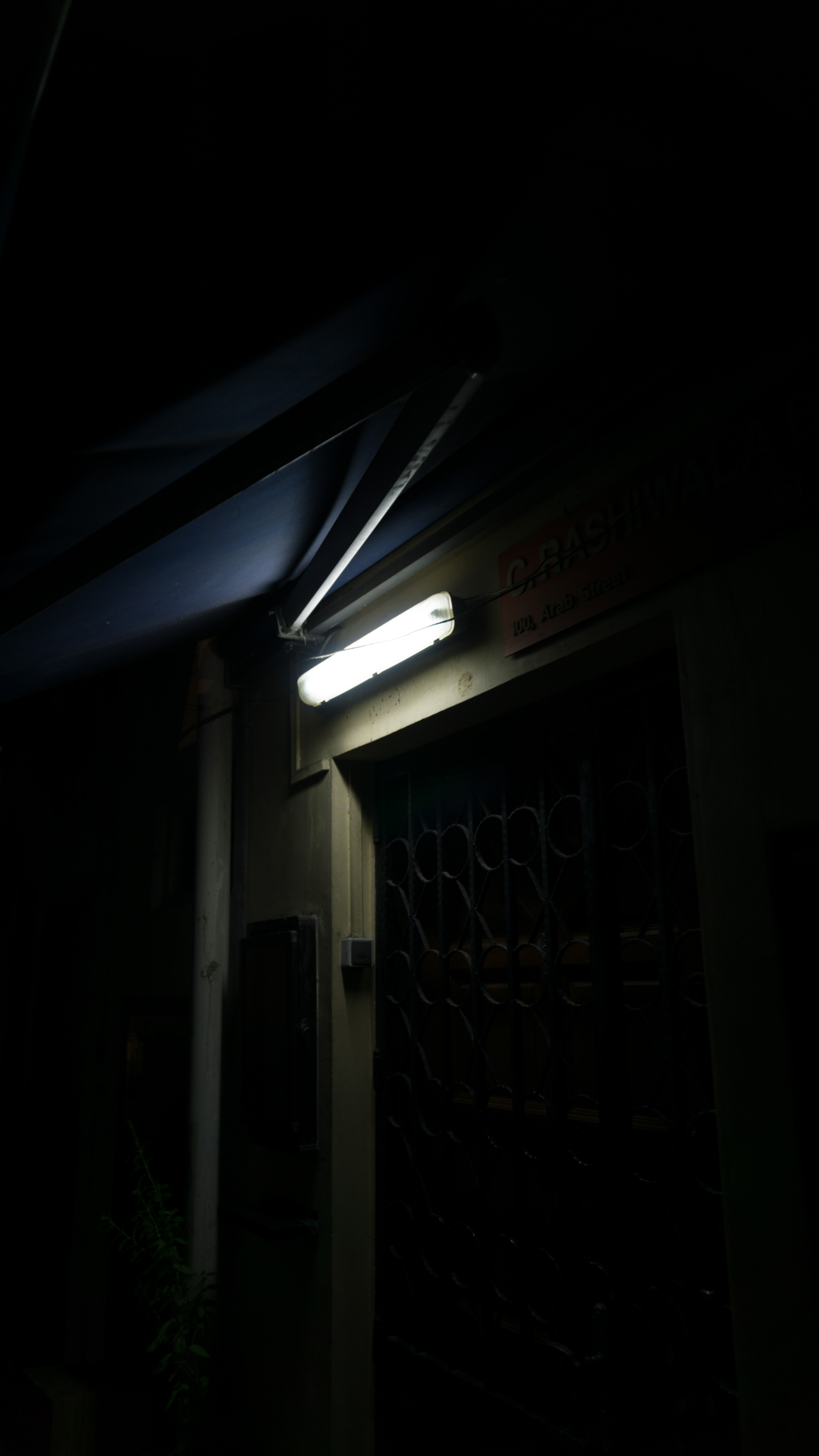
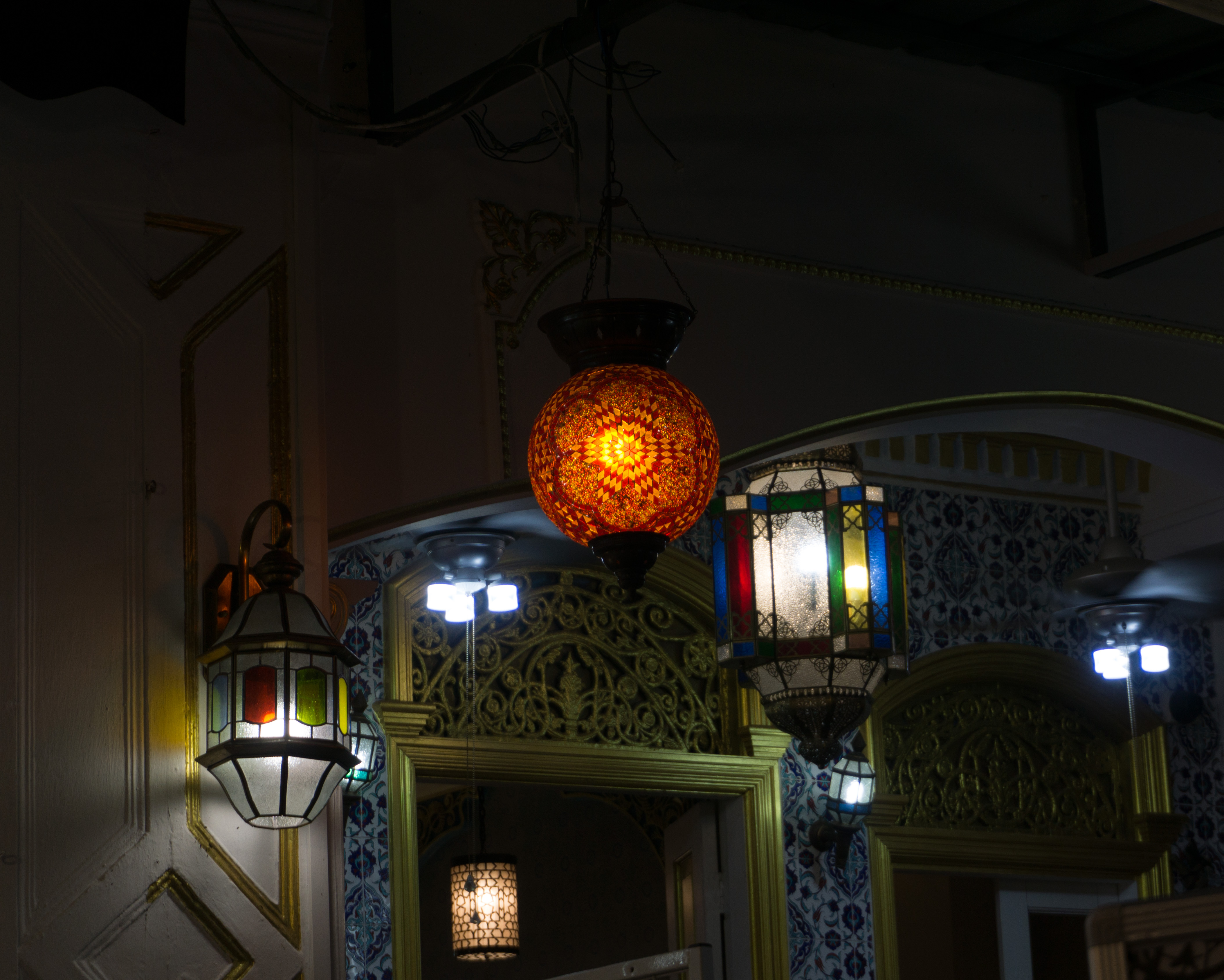


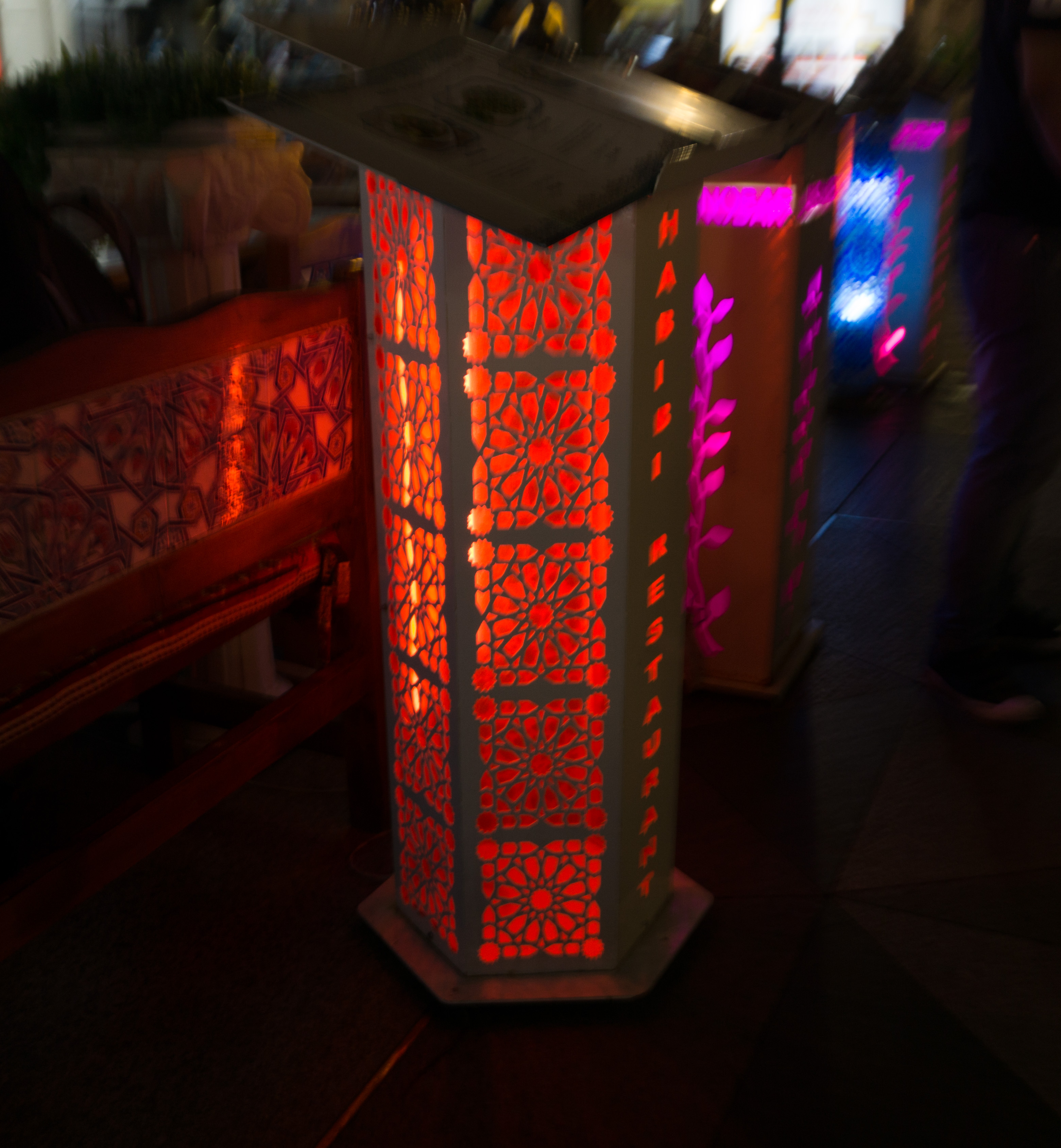

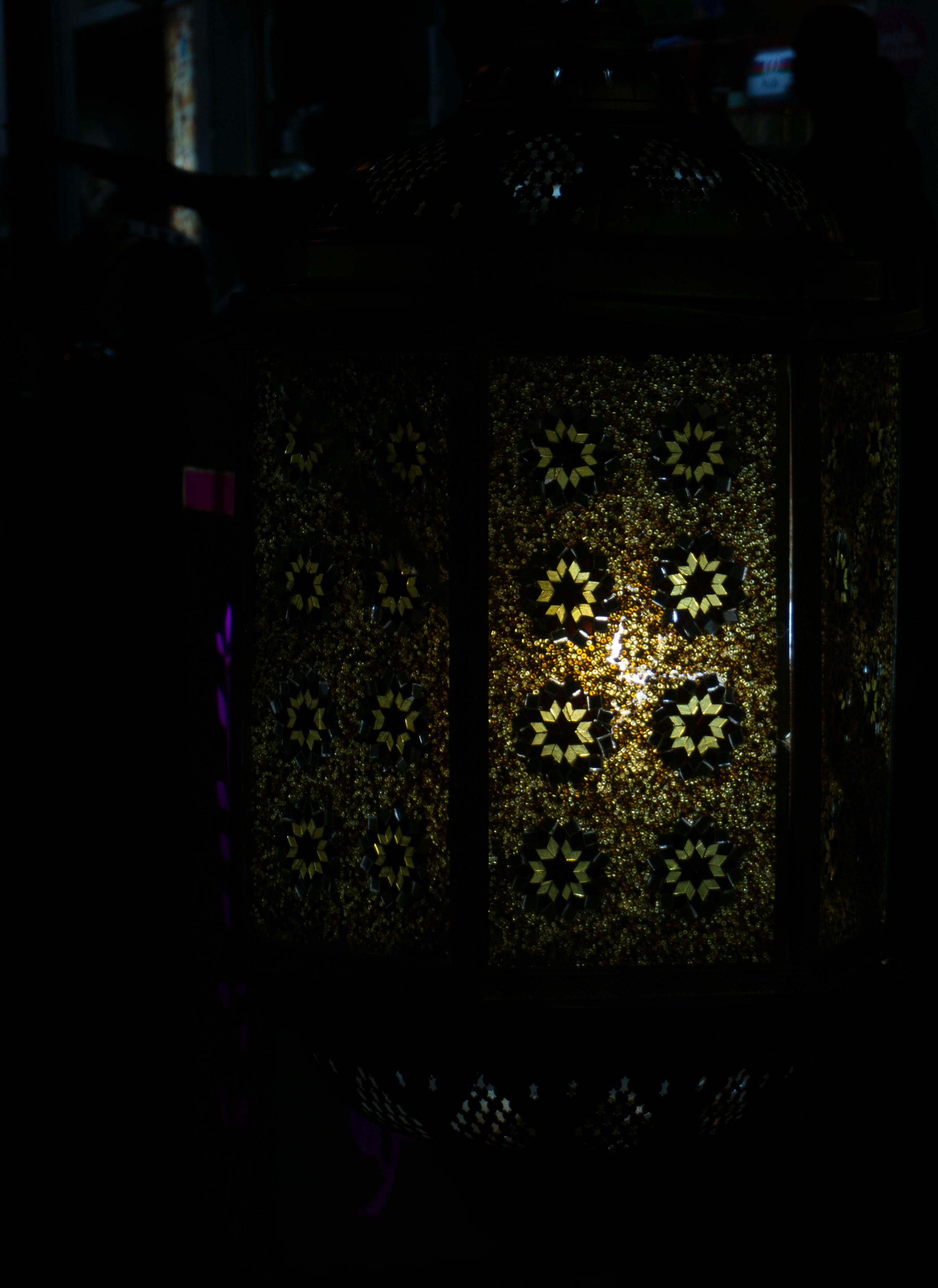
Not only referring to the drinking culture in Kampong Glam at night but the lights at some of the buildings at Kampong Glam also does it too. The lights shine upwards on the buildings creating a unique look and also making the buildings look different.
The lights on the minarets of the Sultan Mosque changes colours too!
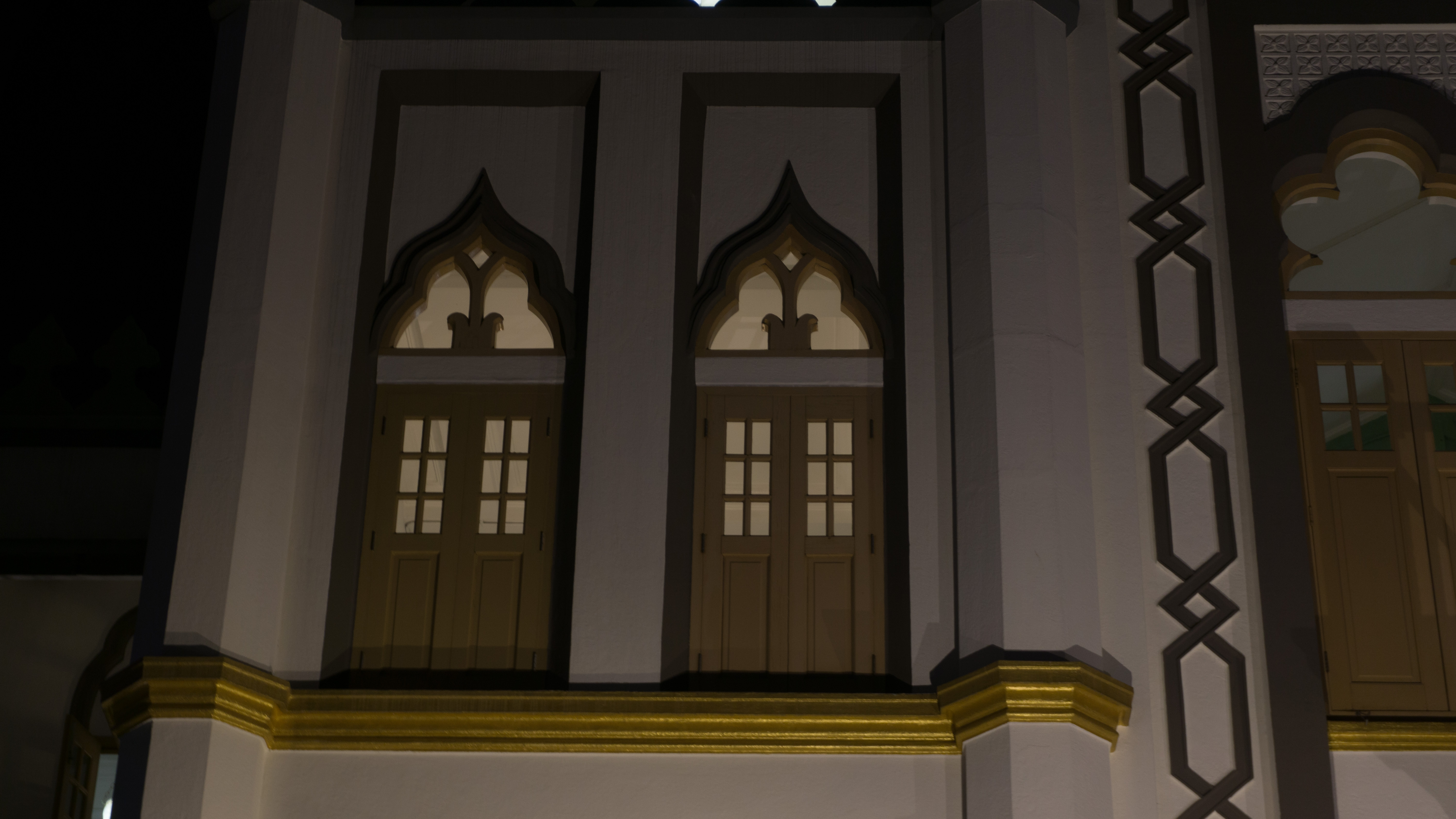

 Other findings
Other findings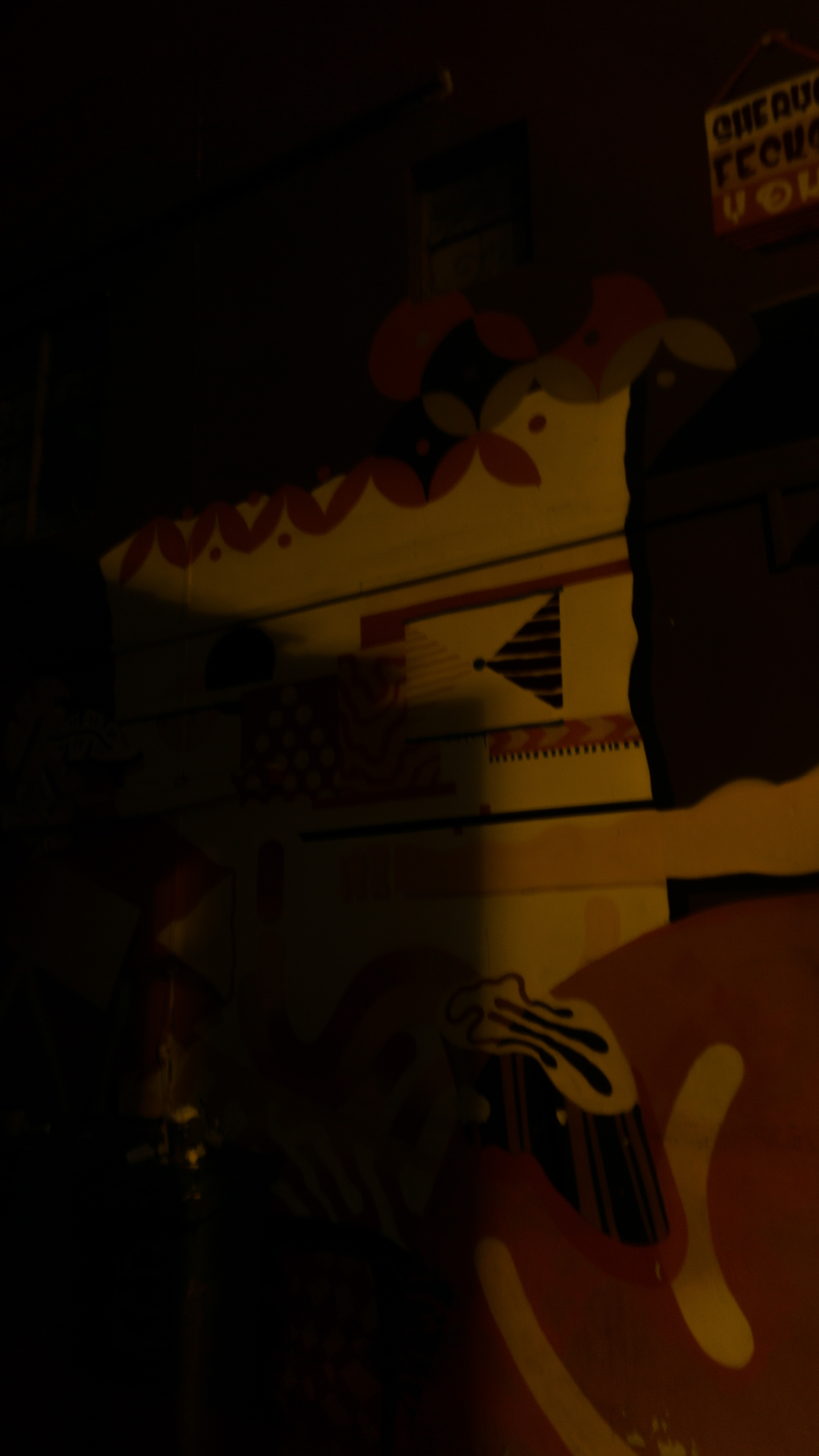
The lights also caused some of the seen patterns during the day to be hidden, creating an interesting look to it.
So after all these findings, I came out with another idea that hopefully works.
After all the research and visits, I could see that there are different activities that would stand out during the day and also at night. In the day, most of the retail shops would be open, and the place would be crowded with tourists groups. In the night, however, the retail shops will be closed and the bars and pubs will open. The lights from different signboards and lamps will be switched on creating an entirely different vibe to the area. All these would be interesting to explore and put in the zine.

Types of standard zippers

Invisible zipper
Difference between open and closed end zippers

Two-way zippers
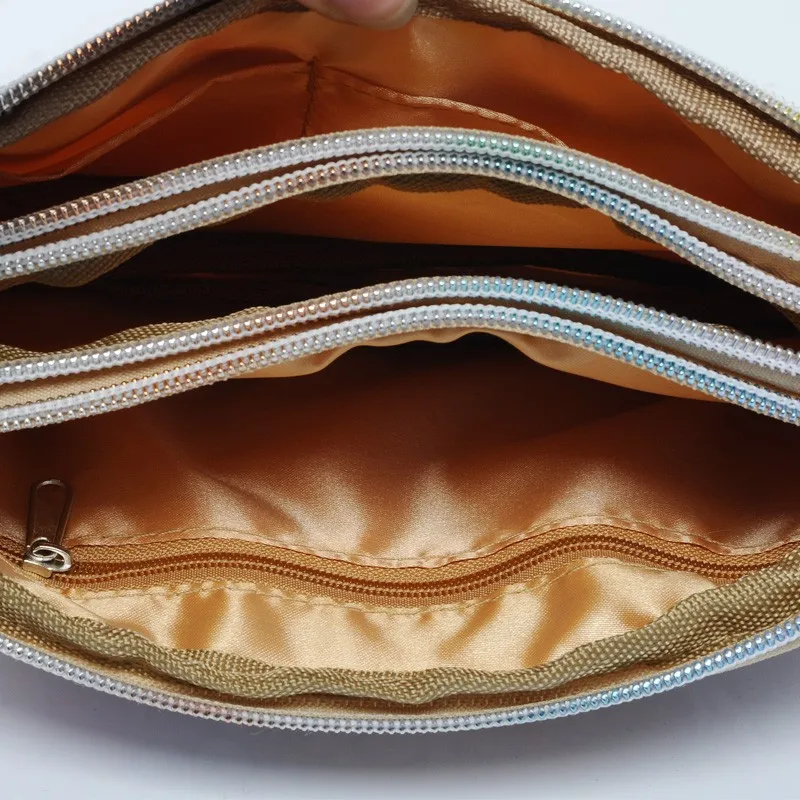
Normally placed at the top part of the bag where you want it to close.

Magnetic snap

Normally place on a flap, with one on each side.

Standard hook and loop, also called hook and loop

Hook and loop for clutches

Hook and loop strap, to hold something together or join a flap together.
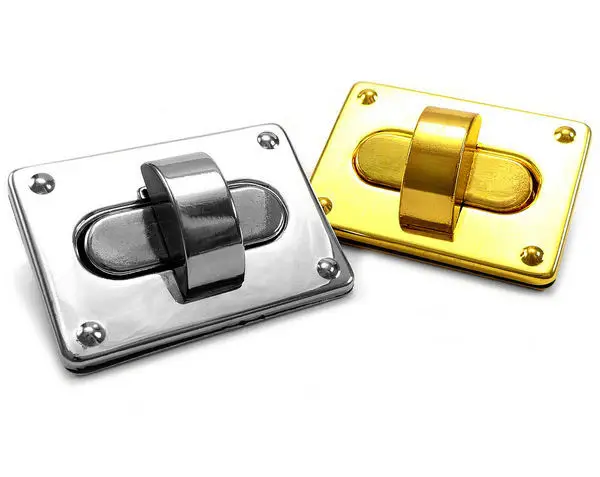
Standard metal twist and lock


Standard side release buckle

Modern side release buckle

Over the bag flap

Under the bag flap

Standard drawstring bag
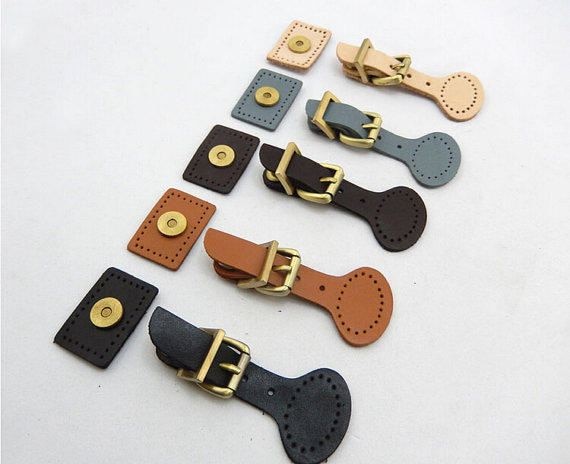
Normally comes with a magnetic snap

‘Hidden’ buckle style

Double buckle style with a magnetic snap

Standard hook and eye

Mechanism style

Normally seen in pants

Flat buttons

Toggle buttons

Shank buttons

Usage of flat buttons
Usage of flat buttons


Sometimes comes with a locking system
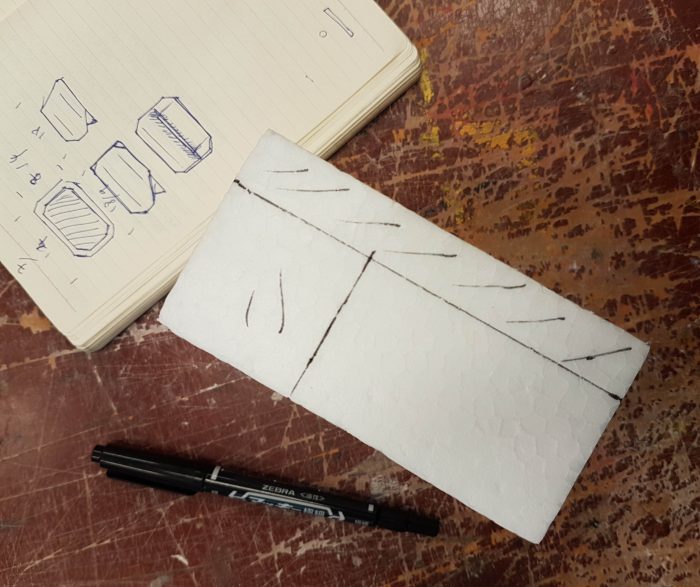
The assignment is to create a phone dock that also has a speaker function. So as usual, before I start on the model itself, I went to look for inspiration and ideas.

A dock with a clock element added to it (https://www.pinterest.com/pin/72409506488637032/)
I was leaning towards making an amplifier instead of a speaker as I think that it would be more practical and I could see myself making it, rather than a speaker which is more technical with all the wiring.

A wooden phone dock that also acts as an amplifier (https://www.pinterest.com/pin/134052526387512858/)

A more elongated amplifier (https://www.pinterest.com/pin/Aam-Qt5I4nTuWv6VpNUtMJbbBsEAD4DrEyT6kXZnbTkoOjdqtdGl4tBmXce9hAy9dL6FxCylxmNrIgzqqWwRCWU/)
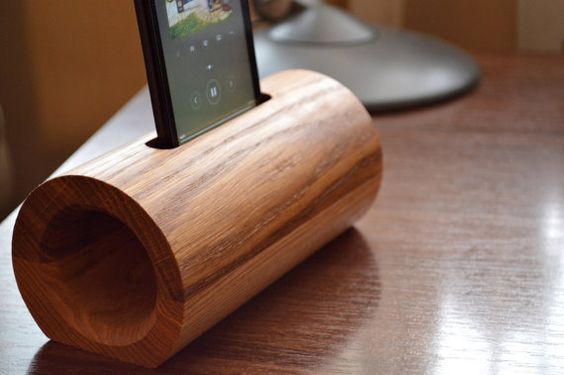
An amplifier where the sound goes to the side instead of the front (https://www.pinterest.com/pin/450641506447976288/)
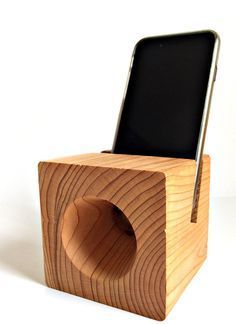
Wooden box like amplifier (https://www.pinterest.com/pin/682295412267648743/)
So I started sketching my first ideas, for both the normal speakers and the amplifier kind.
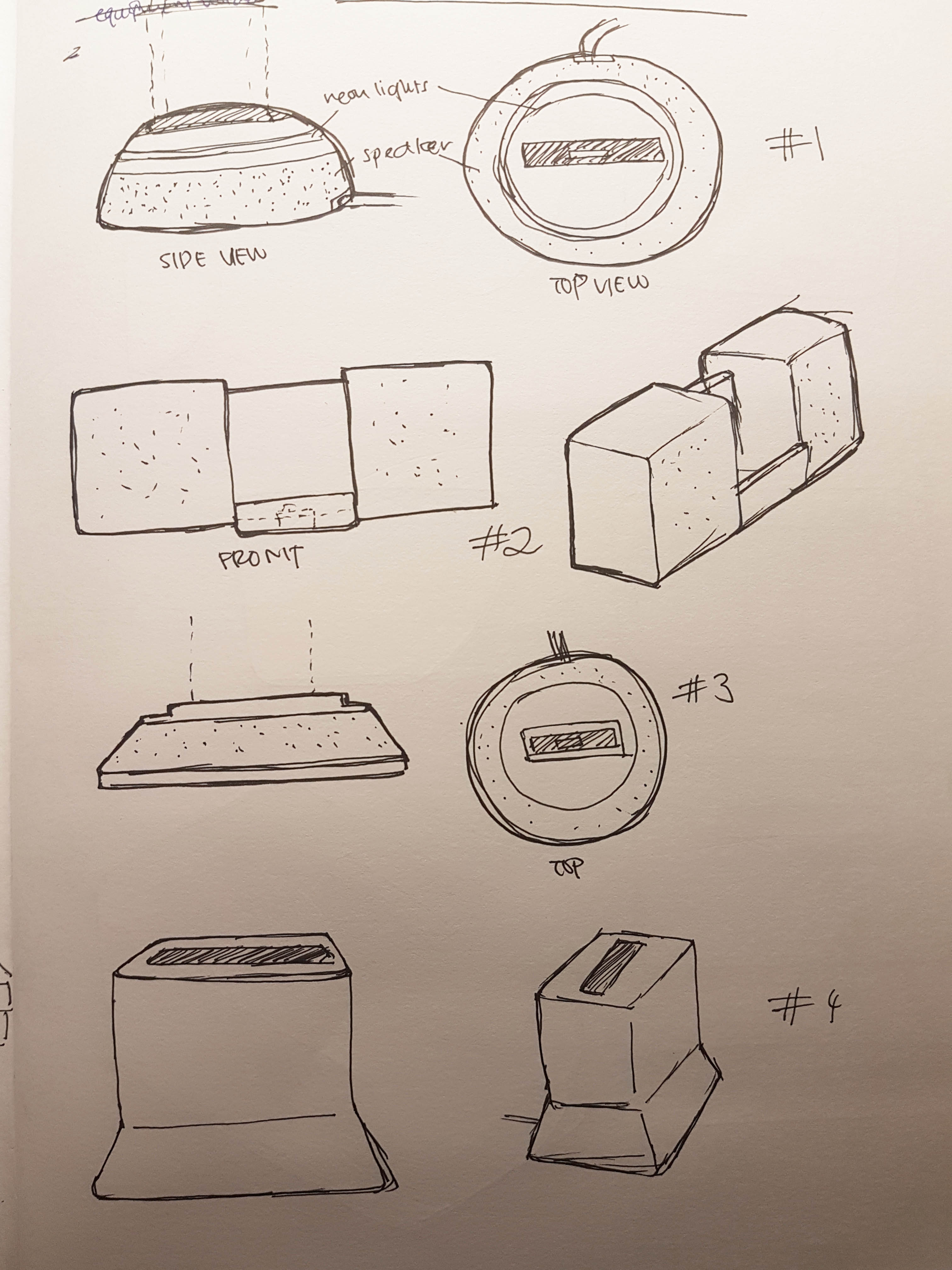 These are some of my early sketches, but they basically look like some random basic shapes that just functions as a speaker and dock. They look very normal and probably already been mass produced before.
These are some of my early sketches, but they basically look like some random basic shapes that just functions as a speaker and dock. They look very normal and probably already been mass produced before.
My idea of all these early sketches is to get these out of my mind first. Normally these ideas are very normal and what first comes to mind when approaching a brief. Most of the ideas are probably average and not much thought comes into it.
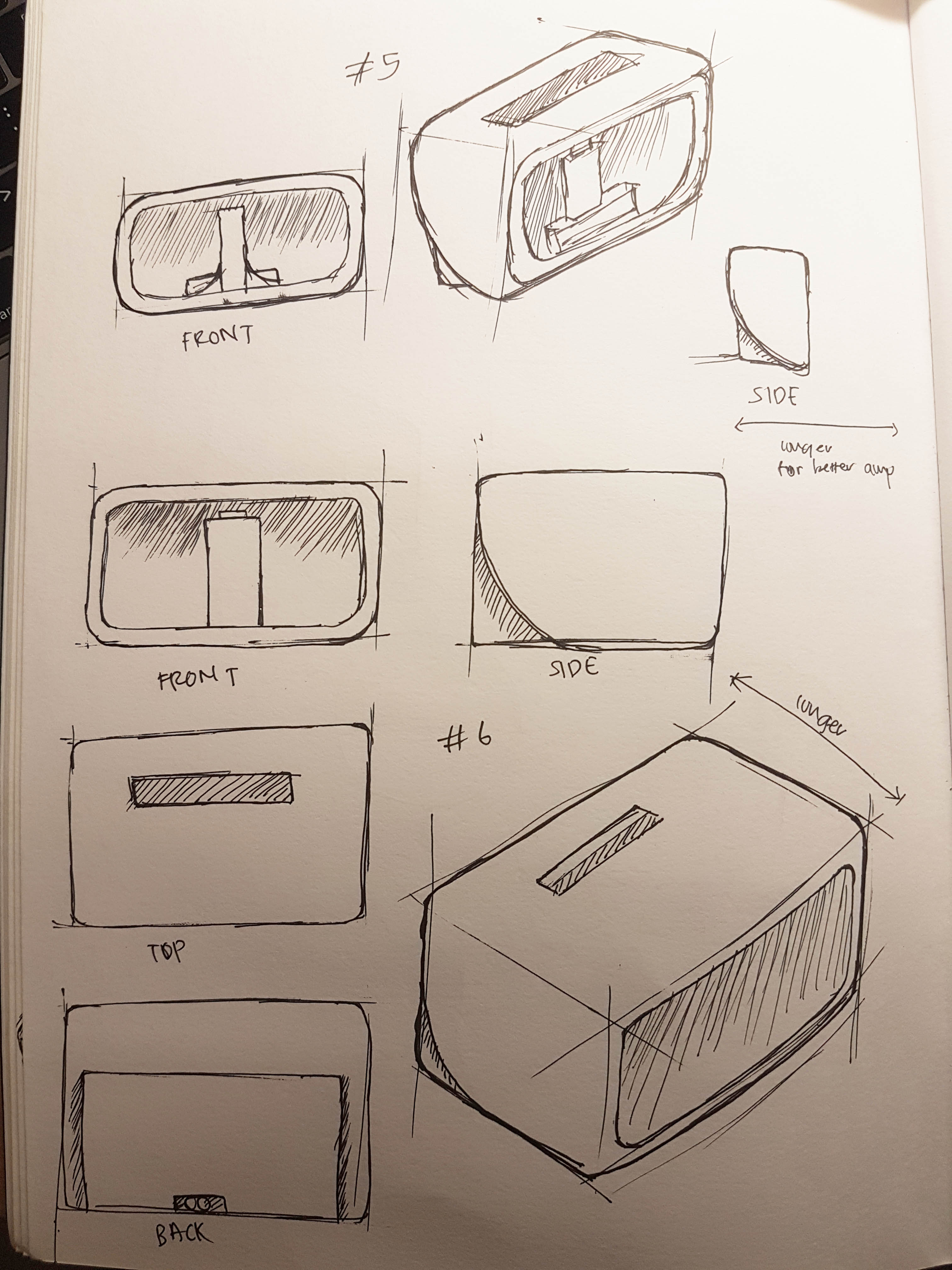
I have decided to go with the last amplifier idea but I was still configuring the shape and size of the object. I have also decided to make it more angular instead of rounded as I think that it is more interesting.
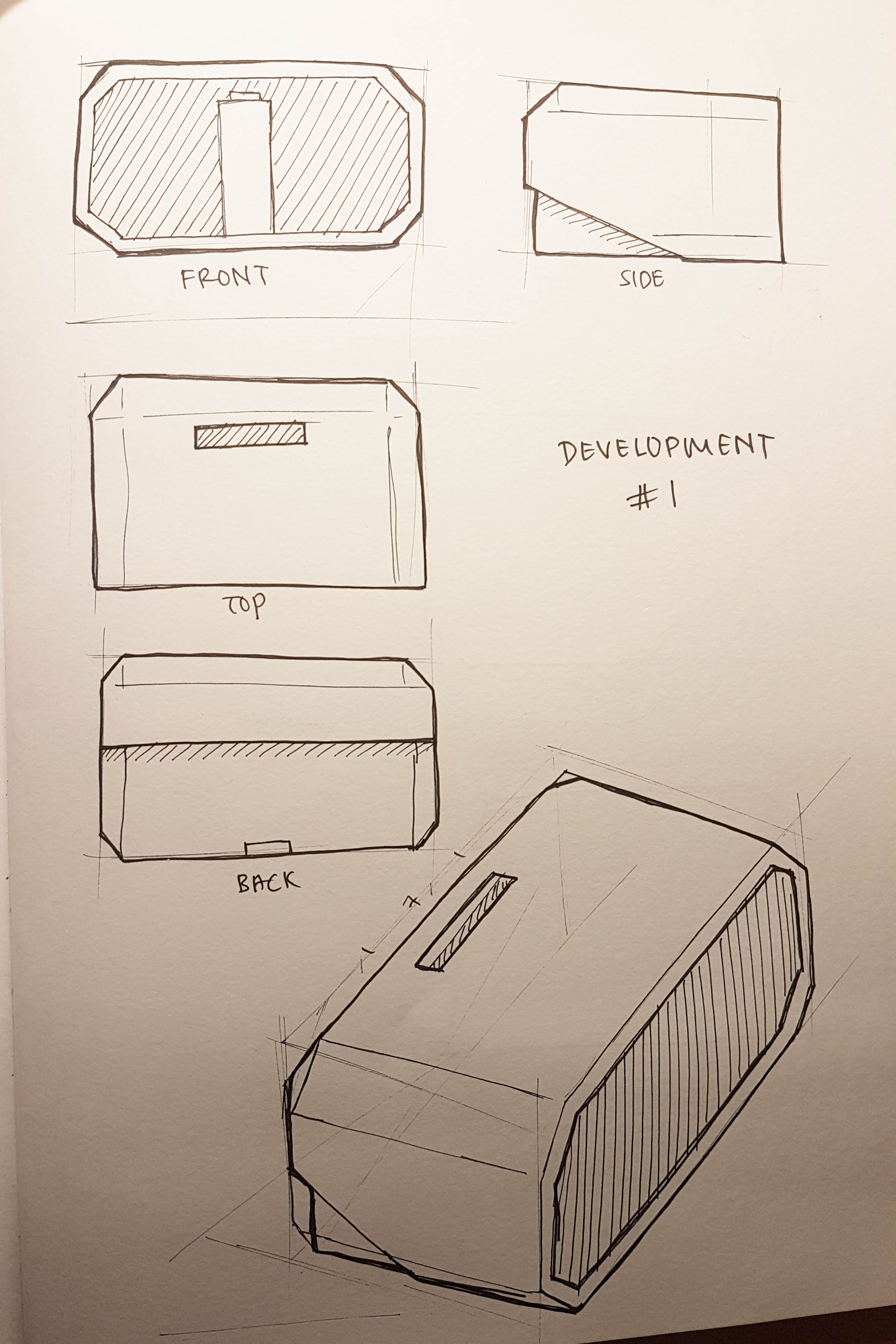
I think that my first development looks good however I think that the model is too wide and short, and at the same time is it too low in my own opinion. So I decided to make those improvements in my next development.
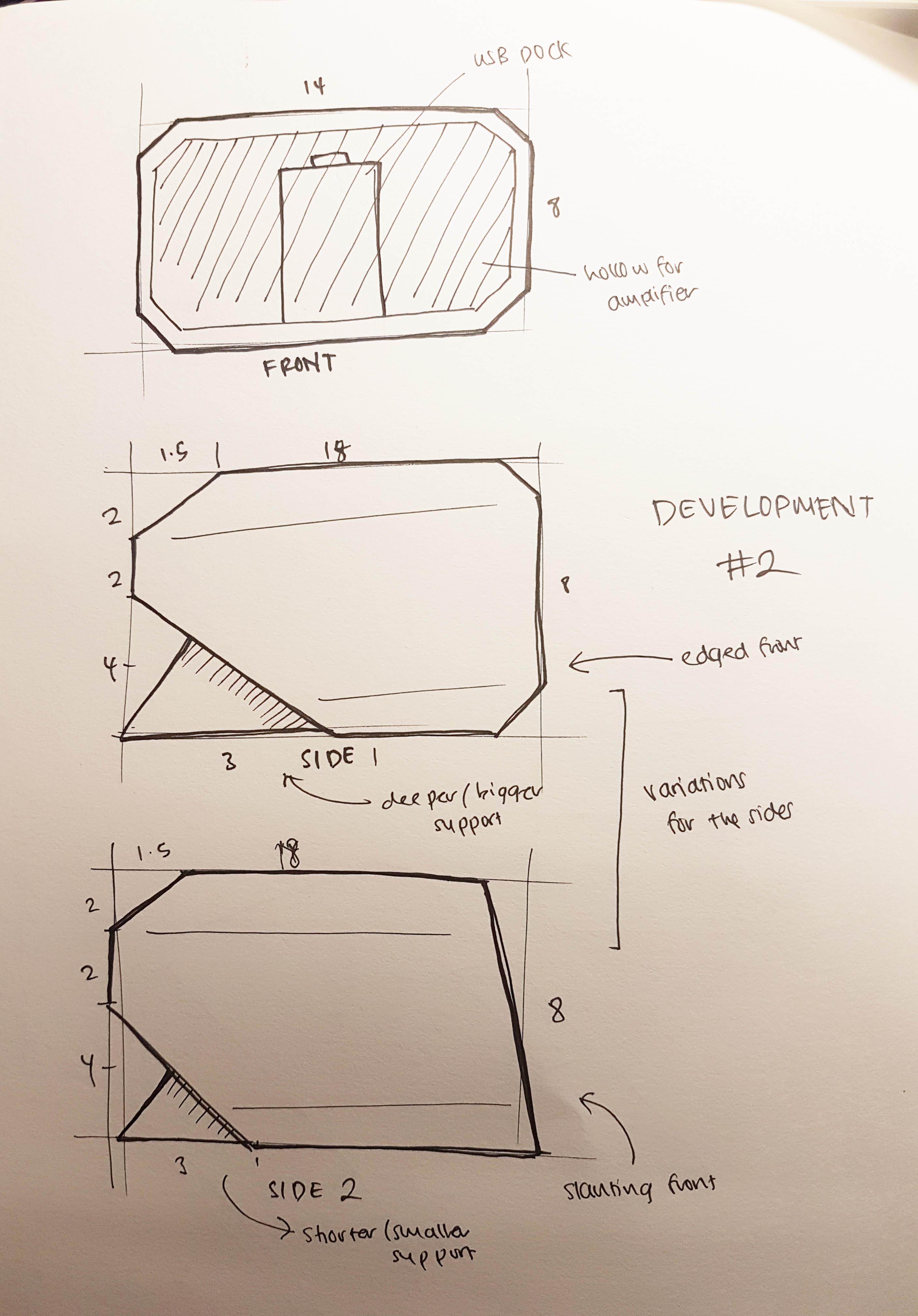
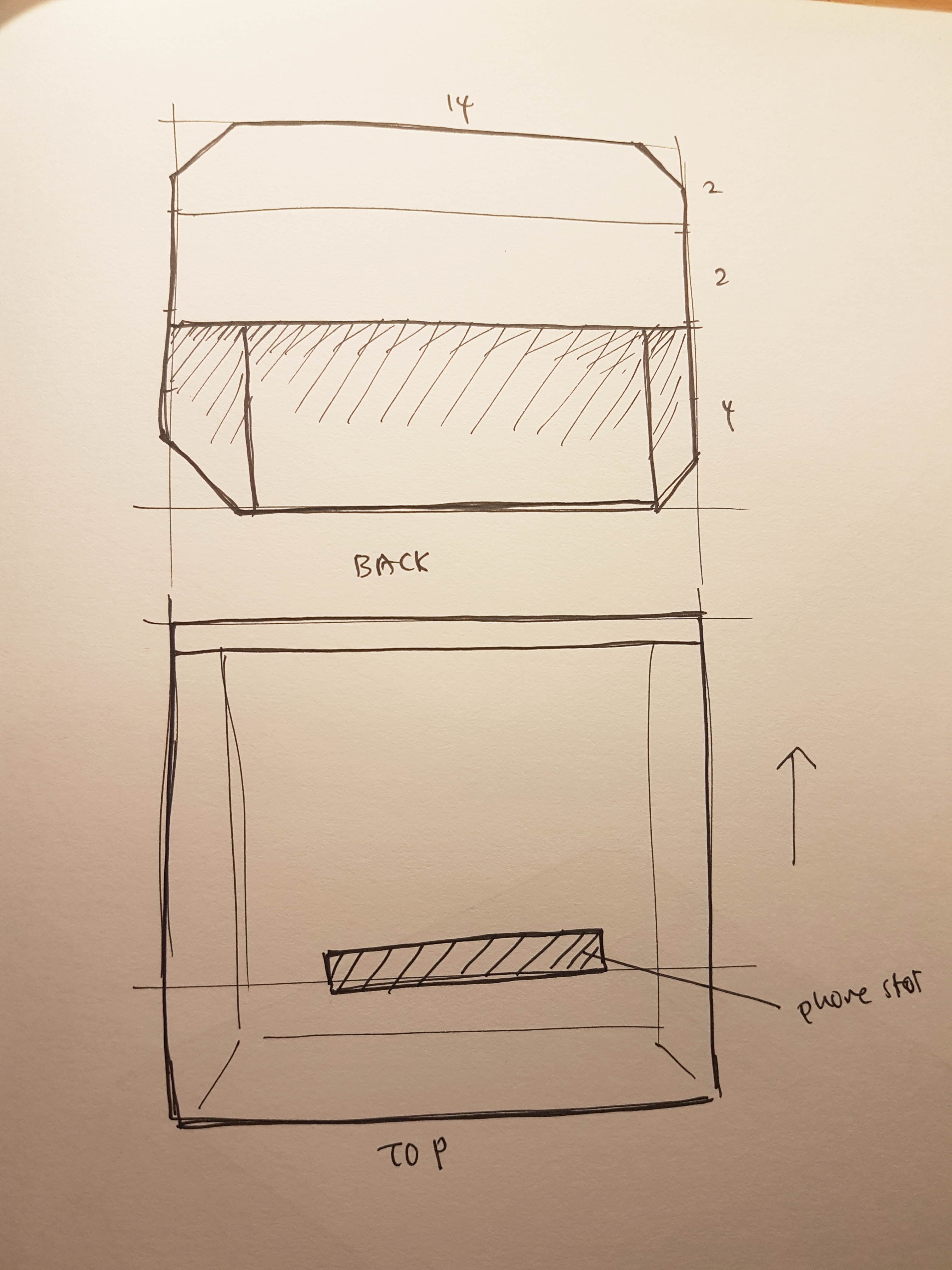
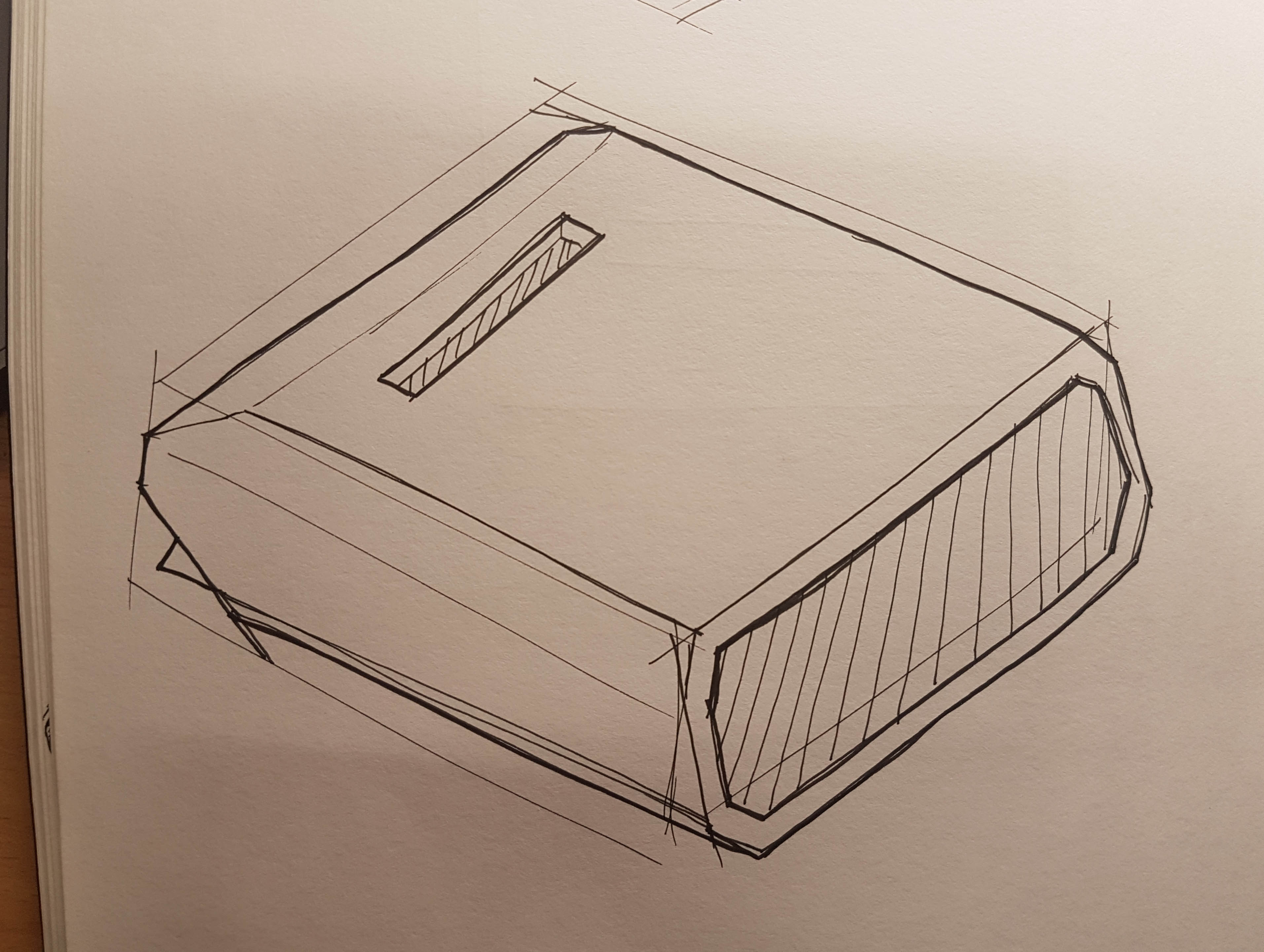 The Process
The Process

After the site visit, I continued my research before I could finalise my idea and direction that I would go for.
There’s quite a bit of news about Kampong Glam but I picked out 2 that are interesting to me.
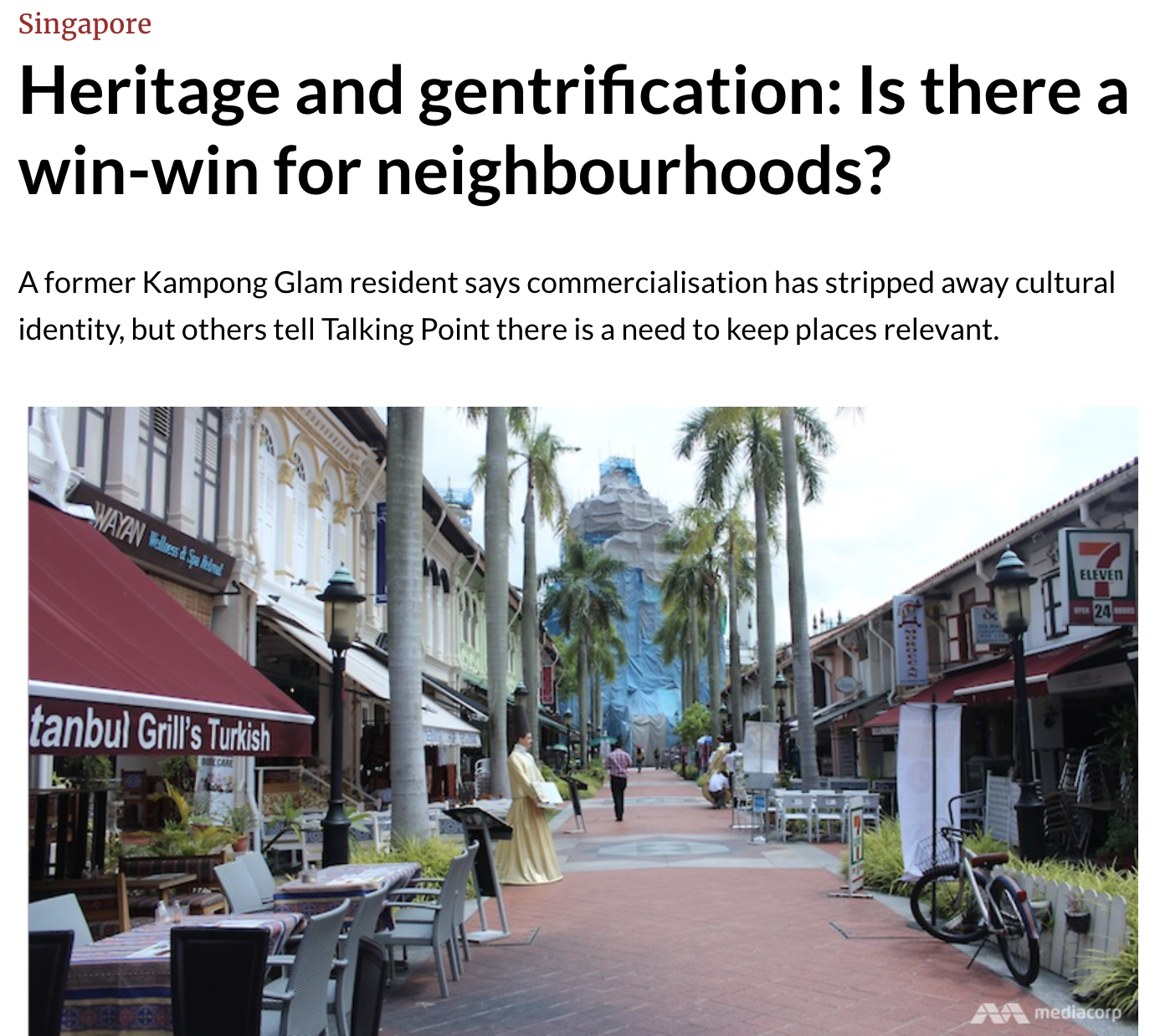
An article from Channel NewsAsia (https://www.channelnewsasia.com/news/singapore/heritage-and-gentrification-is-there-a-win-win-for-neighbourhood-7573348)
Basically, this article mentions how despite the government’s efforts to conserve the architecture and the make it as close as to what it was before, which is an Arab/Malay community, many of the original residences and tenants are still unhappy as the culture is not the same. The place has become too commercialised and it has lost the original kampung spirit, which is the real culture of Kampong Glam.
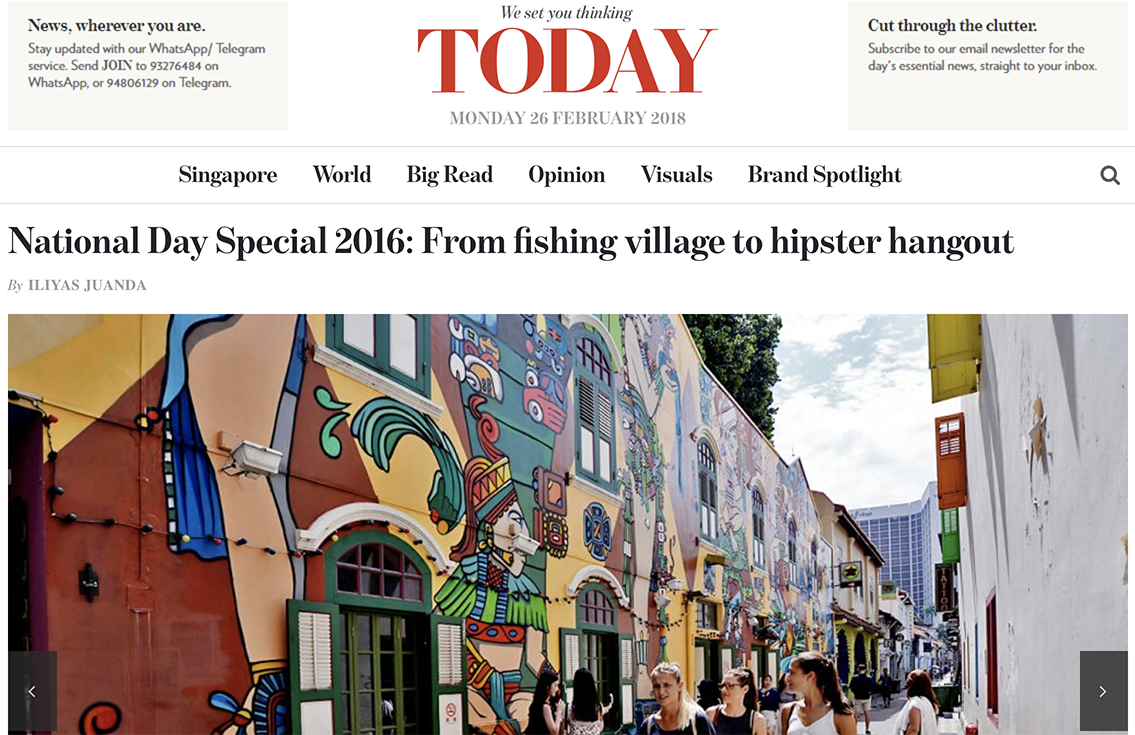
Article from Today newspaper (https://www.todayonline.com/singapore/national-day-special-2016-fishing-village-hipster-hangout)
However, this article by Today, as a National Day Special, focused on how Kampong Glam turned from a fishing village community to a modern tourist attraction. It also mentions, in contraction to the previous article, that eventhough it has lost some of the old cultures, it is still similar. In the past, people from different countries come together bringing in culture and trade. But in this modern times, people from different backgrounds still come to this location to do business. Kampung spirit is still there, with shop owners helping each other out. Even a mention of owners coming together during the fasting month to break their fast together. In a way, it is just a modern version of what was going on in the past.
Time to get some ideas going
As there are many trades in Kampung Glam, I could feature them in the Zine. Silk, fabric, rattan, fragrances, using the elements of those items of trade and creating designs in the zine.
Knowing that the architecture could pretty much be the same in the past and present, I could maybe play with this idea, where it shows the transition and the differences over time.
From the articles, there are mentions of Kampung Glam being too commercialised and lost the original culture of the place, and also that it is not lost but it is just a modernised version of the old. I could play with this idea of blending the old and the new cultures together to make it seem like it’s not lost, just different.

So after doing the pre-search for Kampong Glam, I finally went there now having already mentally prepared myself.
When approaching Kampong Glam, you would definitely see the shophouses first as the whole perimeter of the area is lined by them. No matter where you come in to enter Kampong Glam, you will for sure be greeted with a row of shophouses.
Some of the shophouses that you find:
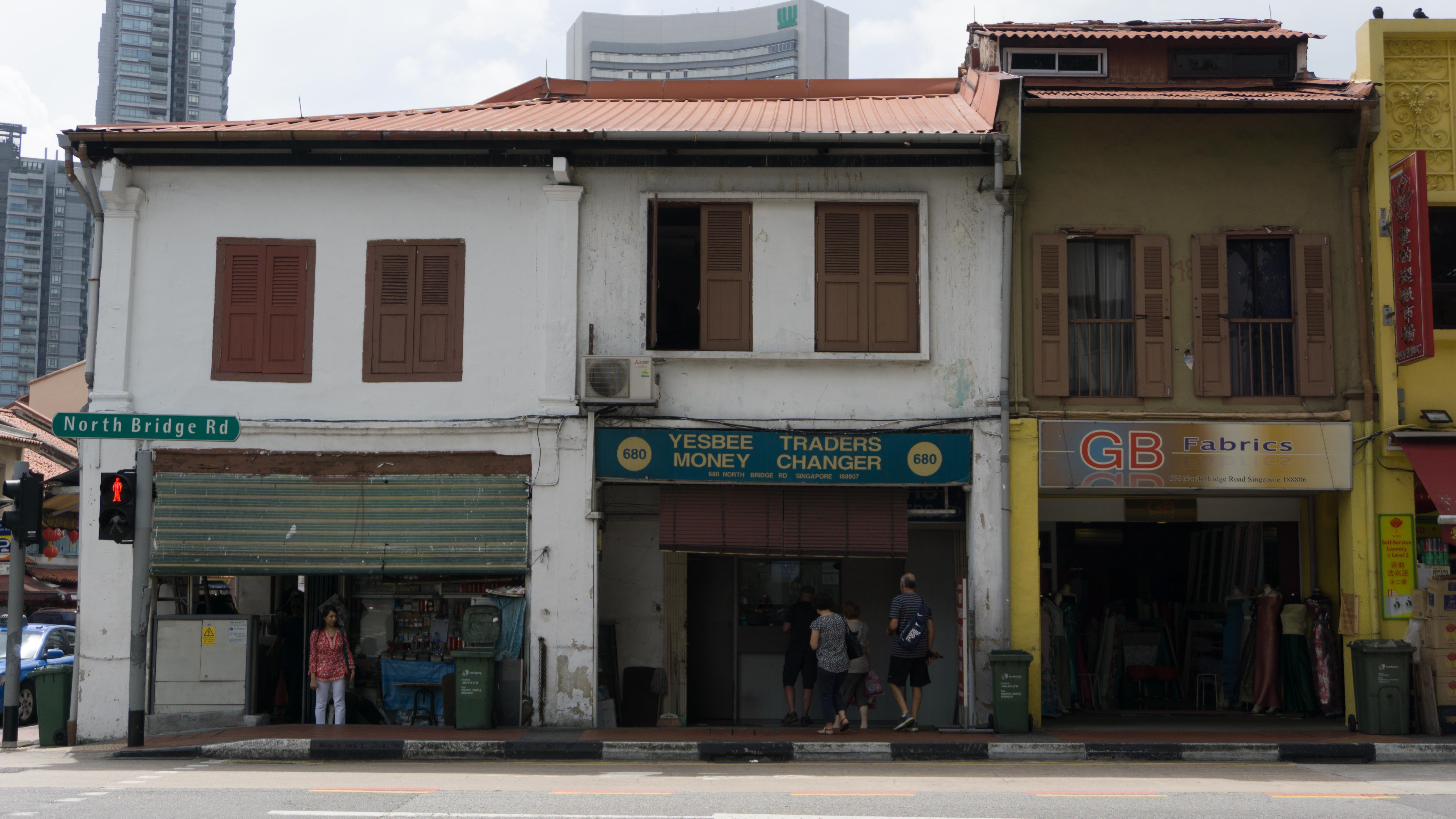
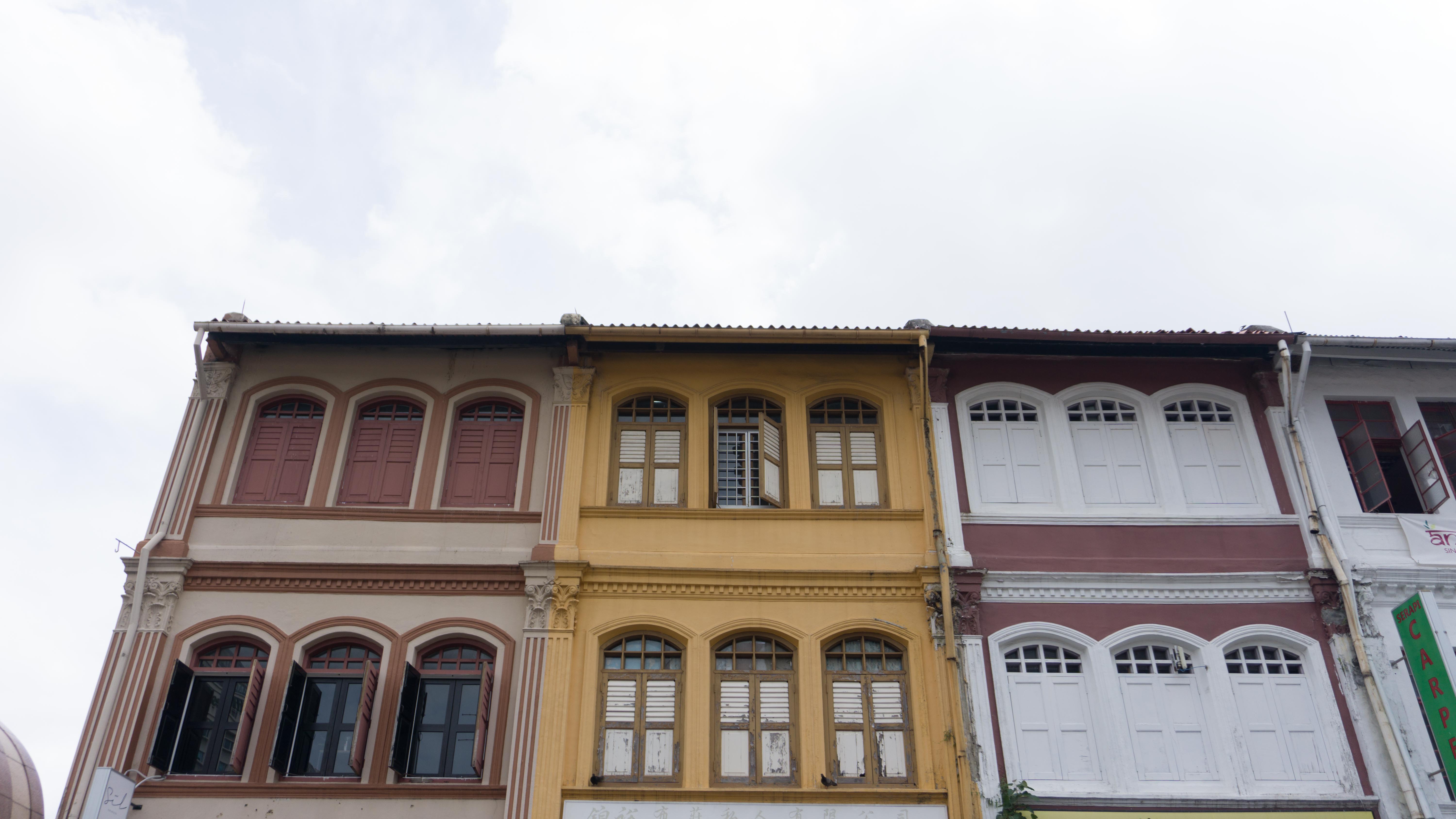
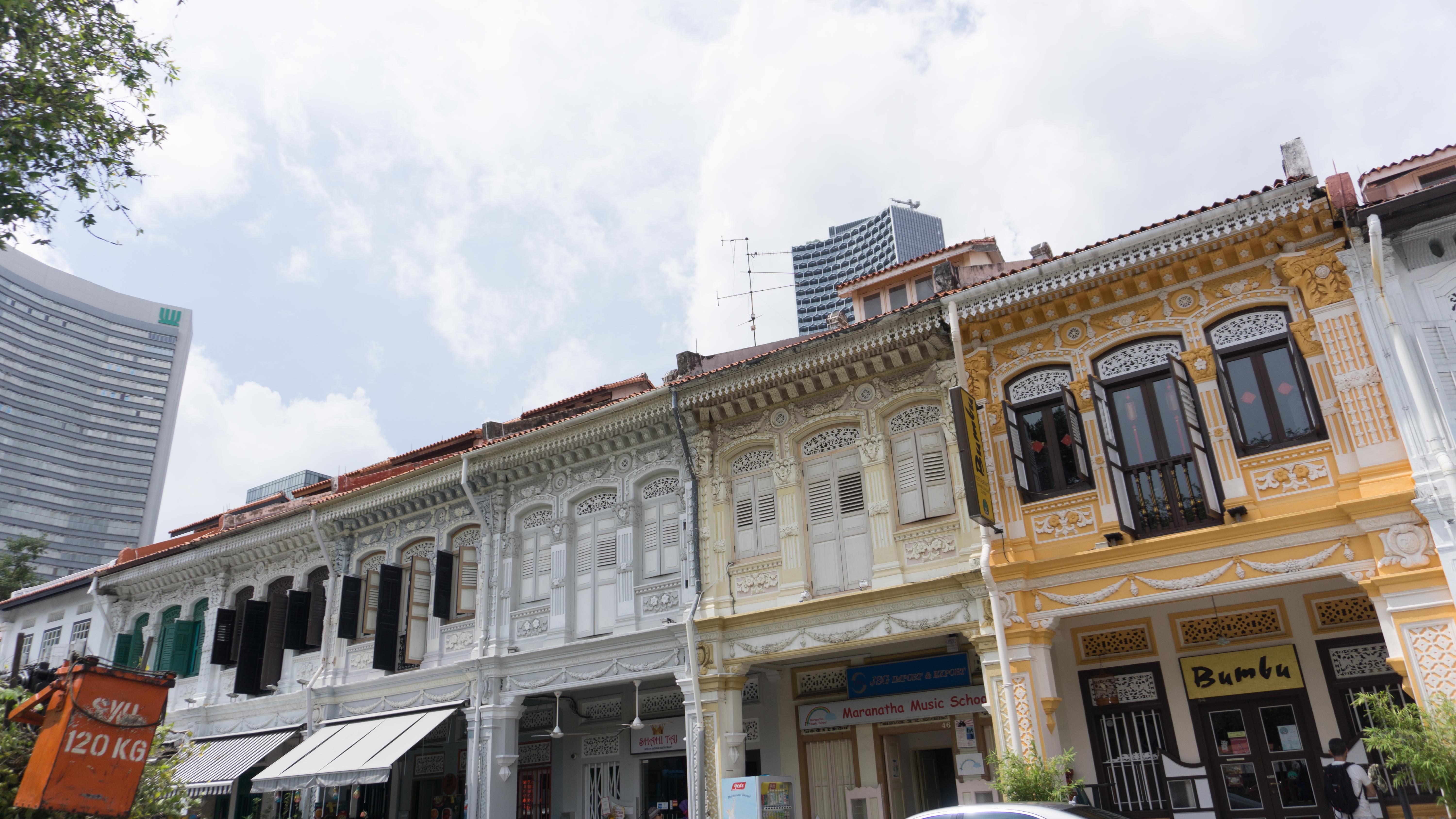
 As you go deeper into the area, you will come to this famous street, which aligns nicely with the Sultan Mosque. Both sides of the street are filled with eateries selling Middle Eastern cuisine and some other shops selling unique items like textiles and fragrances.
As you go deeper into the area, you will come to this famous street, which aligns nicely with the Sultan Mosque. Both sides of the street are filled with eateries selling Middle Eastern cuisine and some other shops selling unique items like textiles and fragrances.
 And of course, the main feature of Kampong Glam, the Sultan Mosque, with its shiny golden dome high above everything else in the area.
And of course, the main feature of Kampong Glam, the Sultan Mosque, with its shiny golden dome high above everything else in the area.
Moving into the right lane and you will spot something that is not a shophouse. It is the old Temenggung palace, now converted into the Malay Heritage Center.
As mentioned in the previous post, there are 4 main types of architecture found during my research. So I decided to look for these 4 different styles.
It took me a while to look for this one as the main features are hidden behind the signboard, but what gave it away is the “striped” pillars.

This one was not hard to find as it was the most decorated and detailed amongst all the shophouses.

This was quite hard to find as it was across North Bridge Road and I would not expect it to be there, at the famous Zam Zam store!
 These few shophouses, eventhough colourful, was a little out of the way and was furthest from the center.
These few shophouses, eventhough colourful, was a little out of the way and was furthest from the center.
So based on the research that I found, I tried to look for the different trades in Kampong Glam. There were a lot of different kinds of trades that can be found around Kampong Glam, but most of them are located along Arab Street. There you can find mostly carpet traders and tailors who also sell different kinds of fabrics.
Most of the things you see in Kampong Glam would seem old and dated, very traditional. However, if you go towards the famous Haji Lane and Bali Lane, you will find more modern shops such as boutiques, hipster cafes and bars.
Towards the other end of Haji Lane, there are more pubs, tattoo parlours and more graffiti works on the walls, which have been an attraction by itself for tourists and occasionally for locals too, making it a photo spot.
Some of the photos of pubs. It’s considered empty as I went there on a weekday lunchtime. It would be more crowded in the evening and weekends.


 And some of the graffiti works that you can find filling up the walls of this section of Kampung Glam:
And some of the graffiti works that you can find filling up the walls of this section of Kampung Glam: